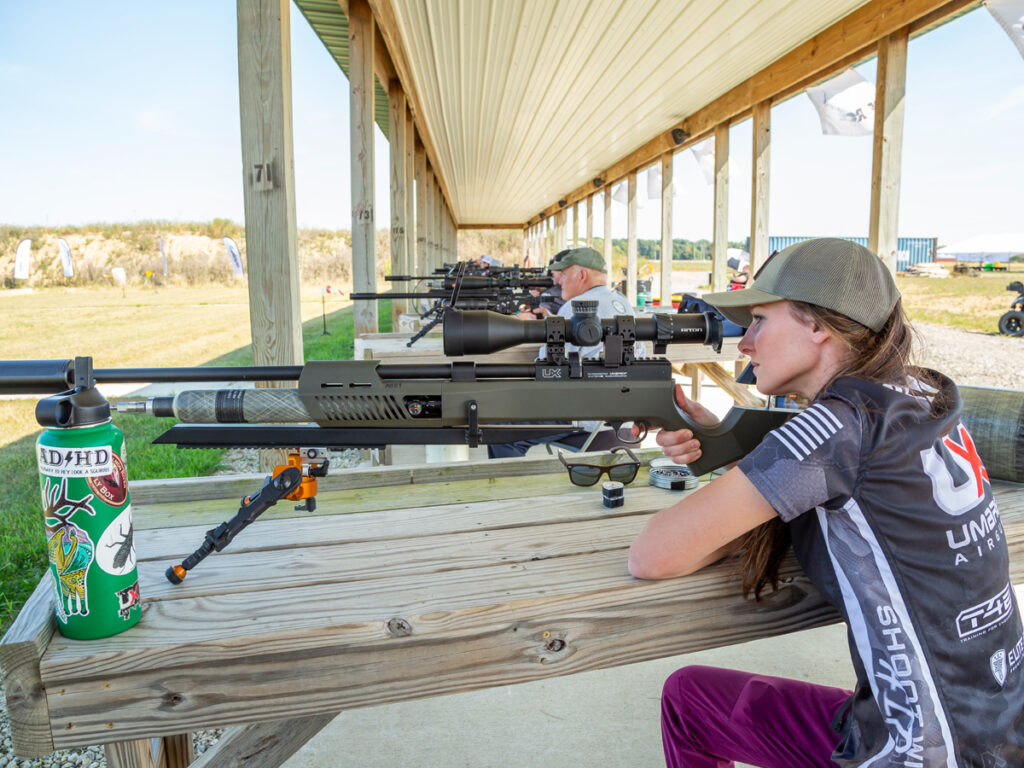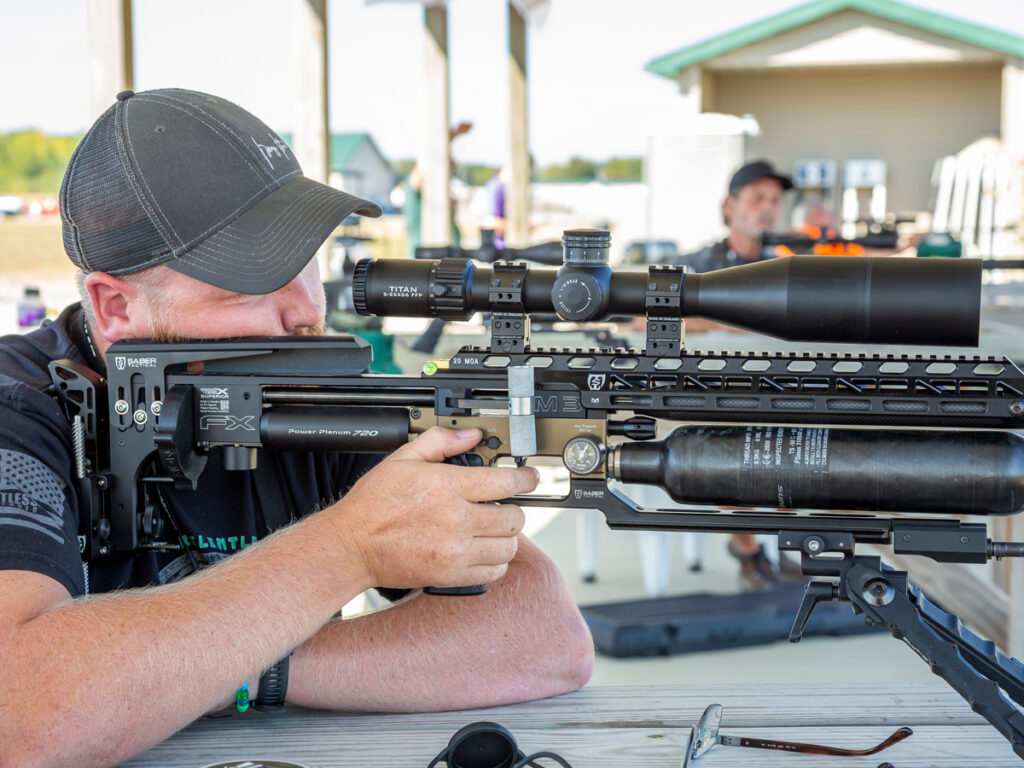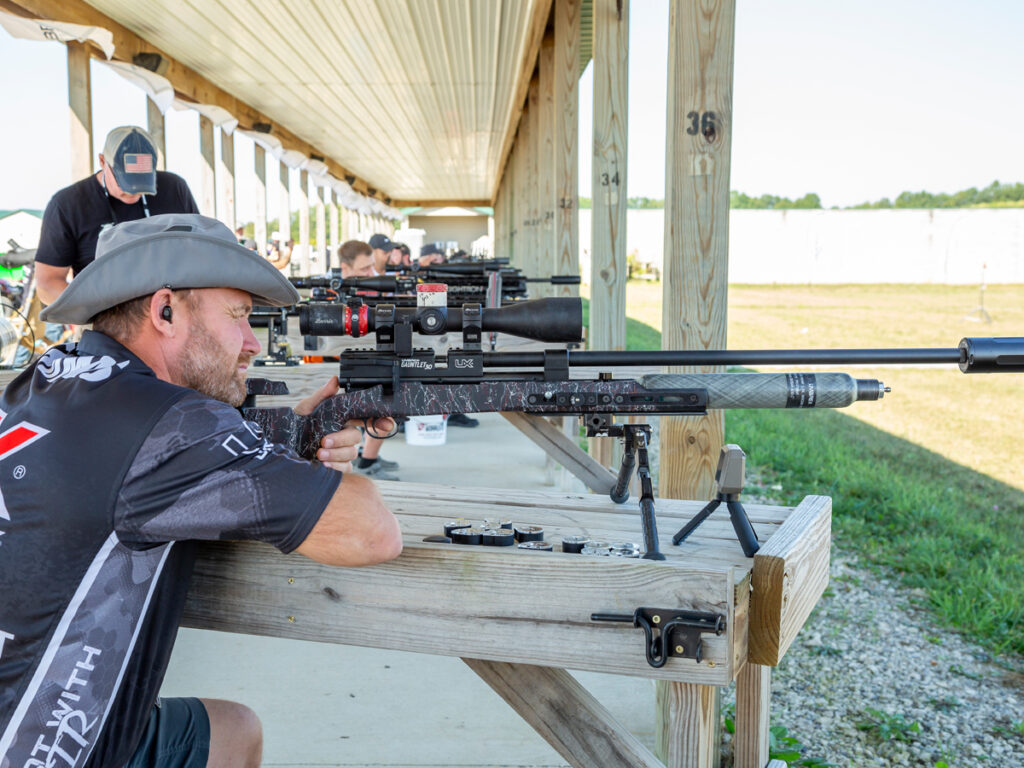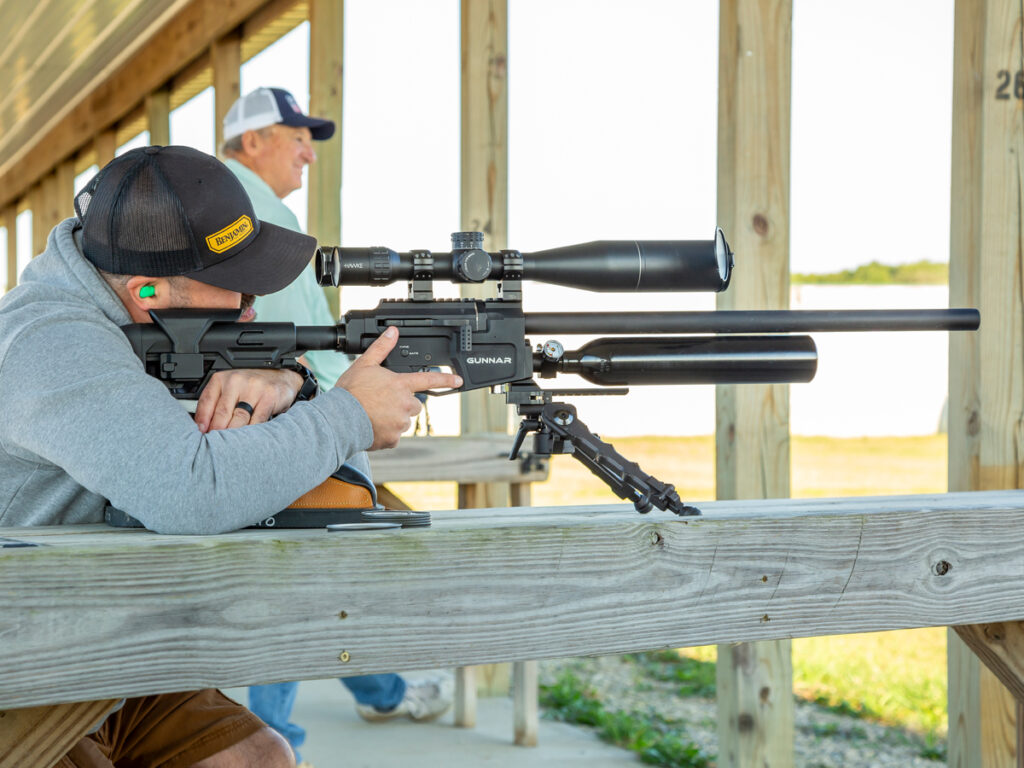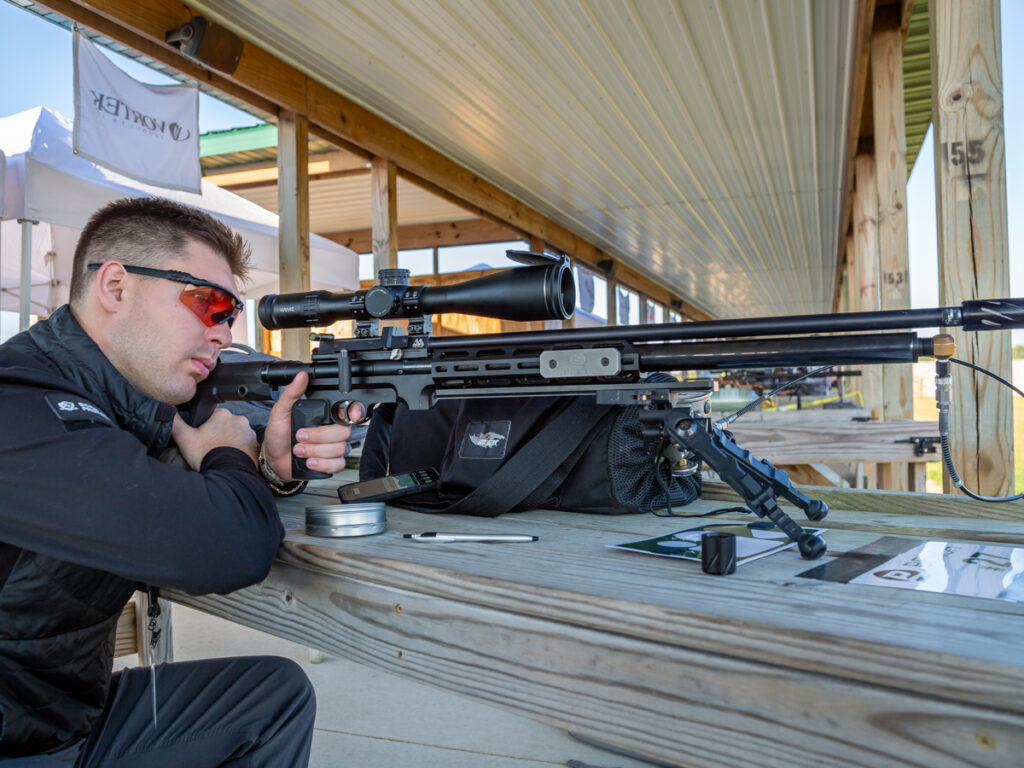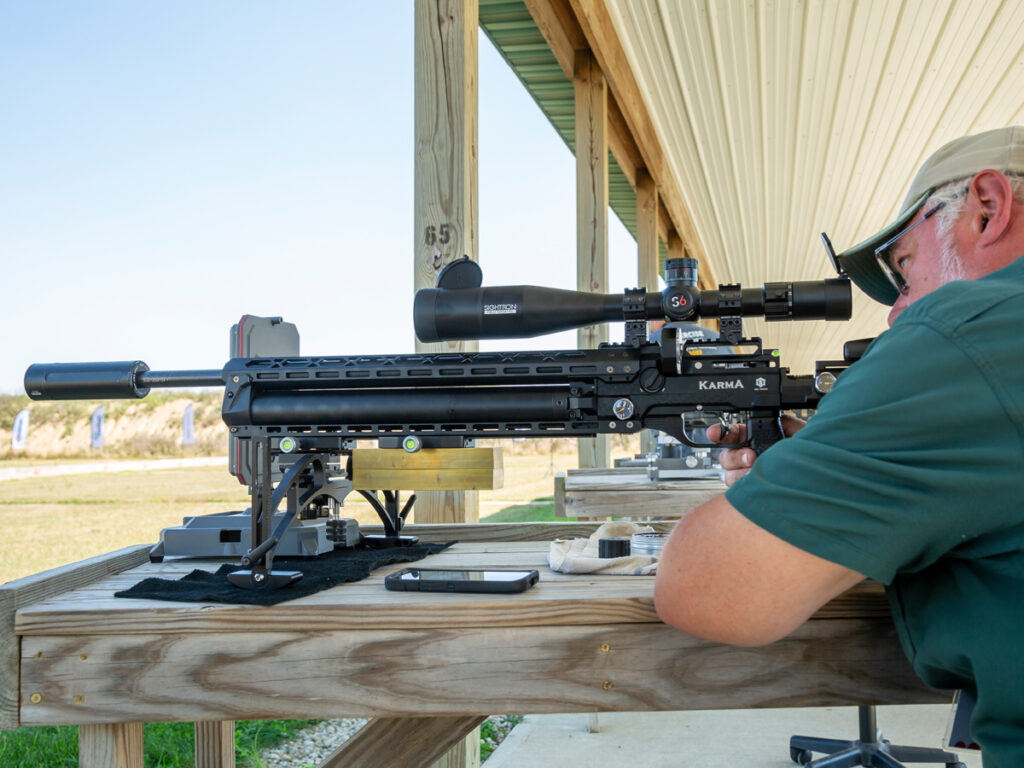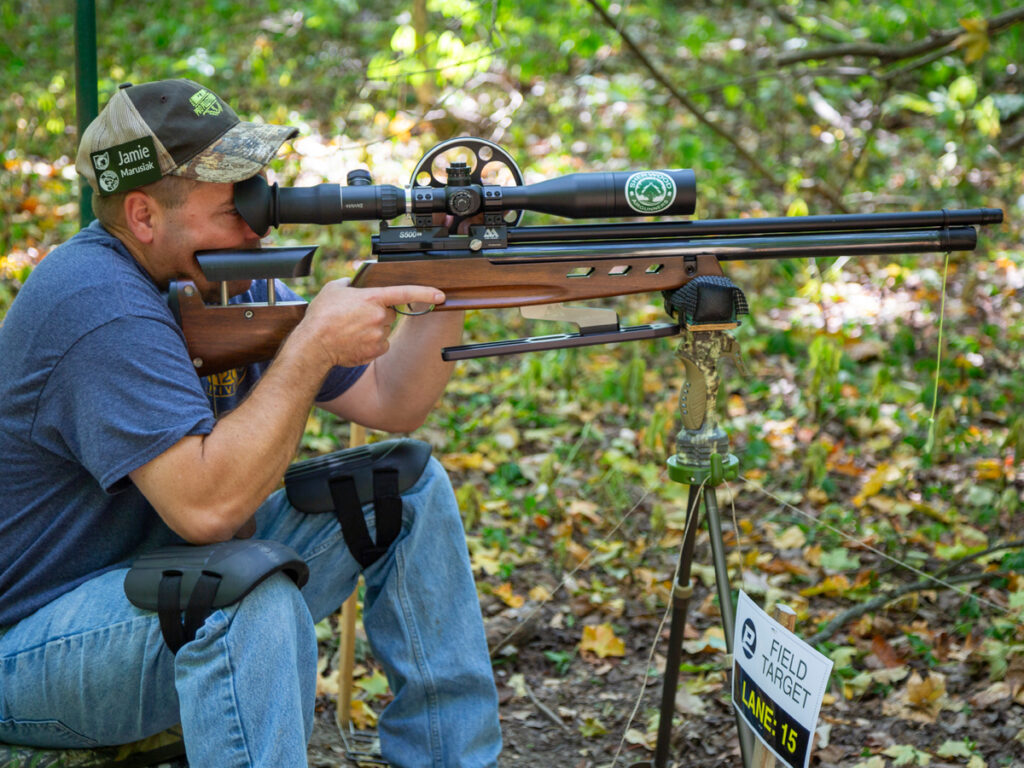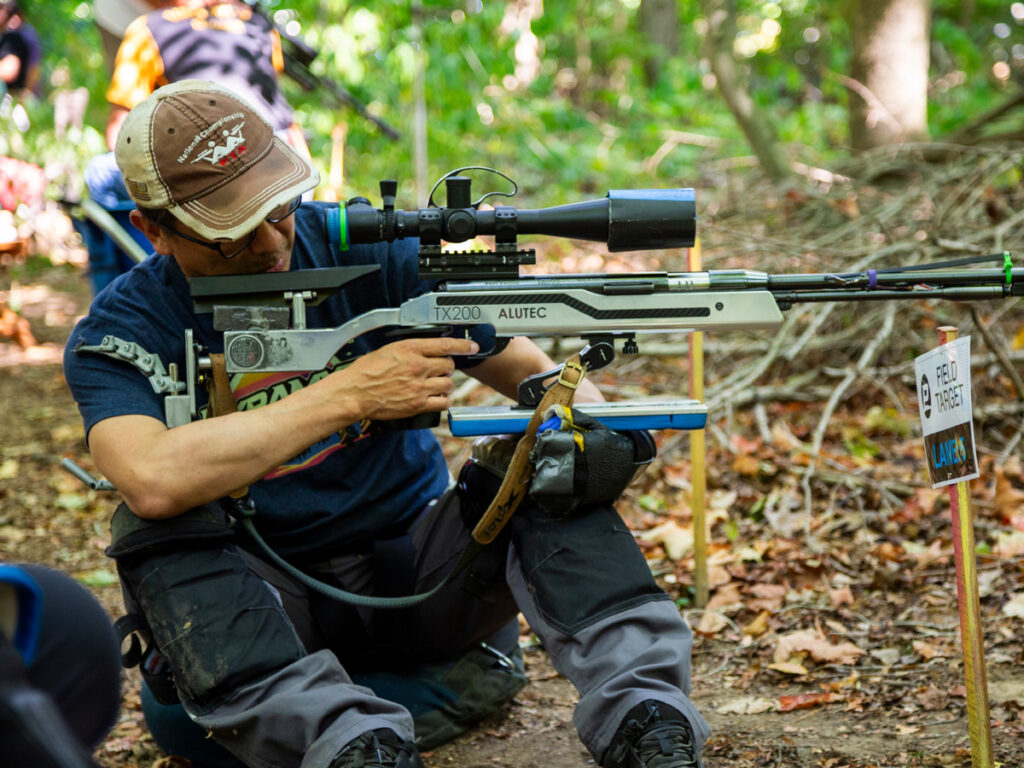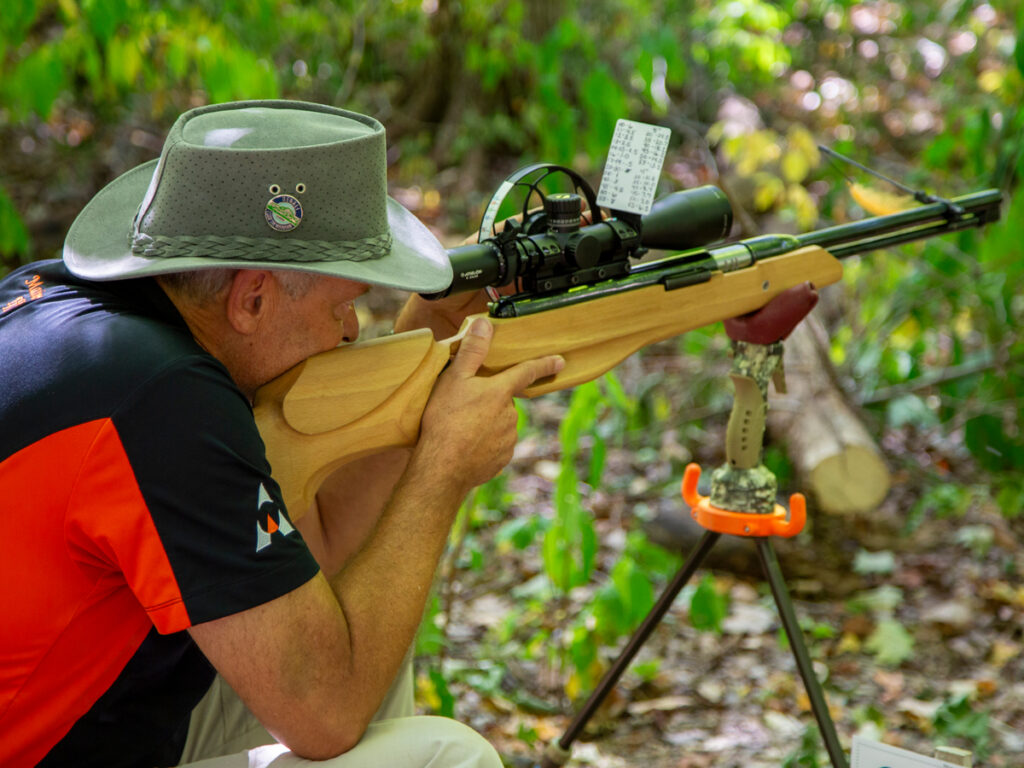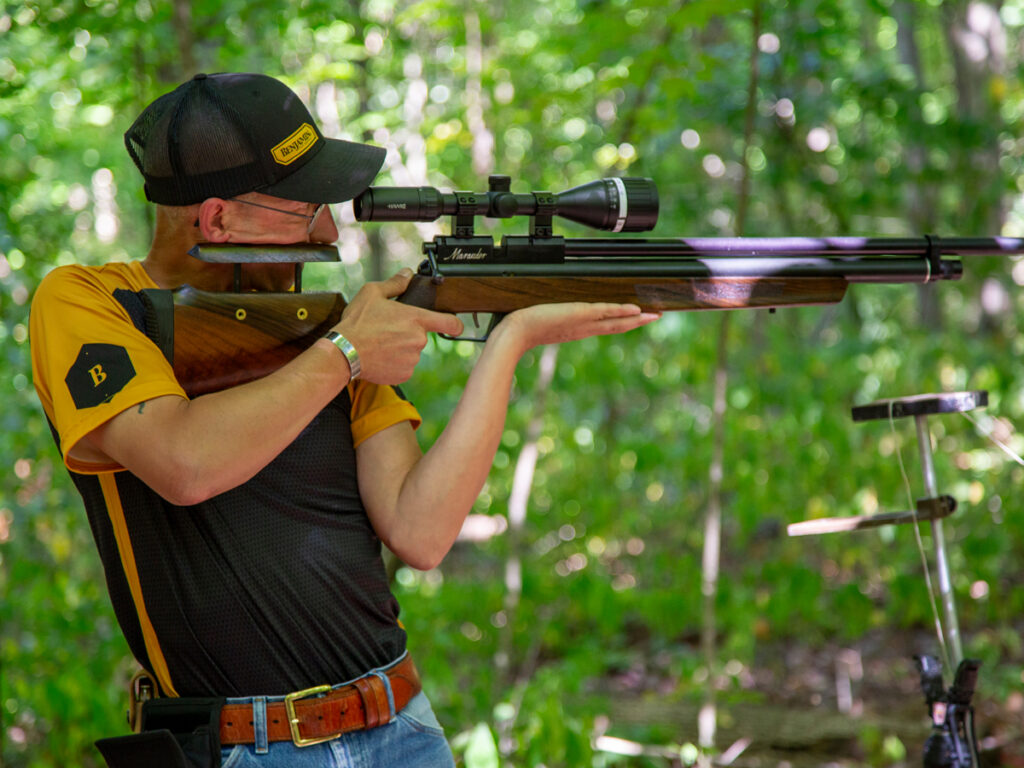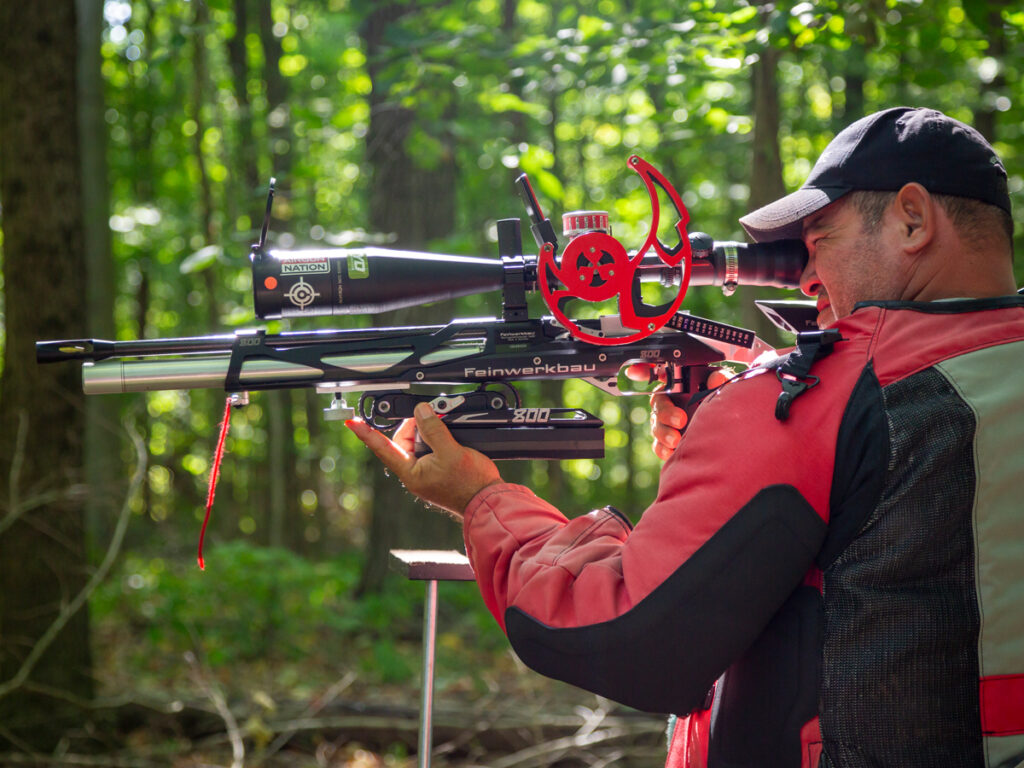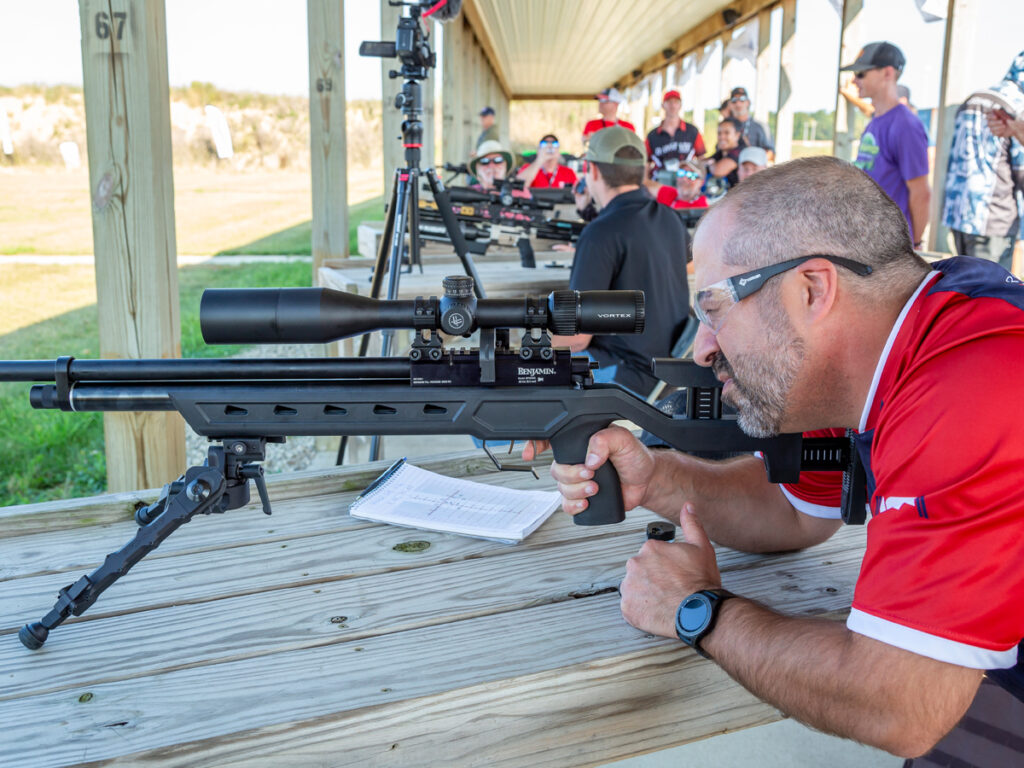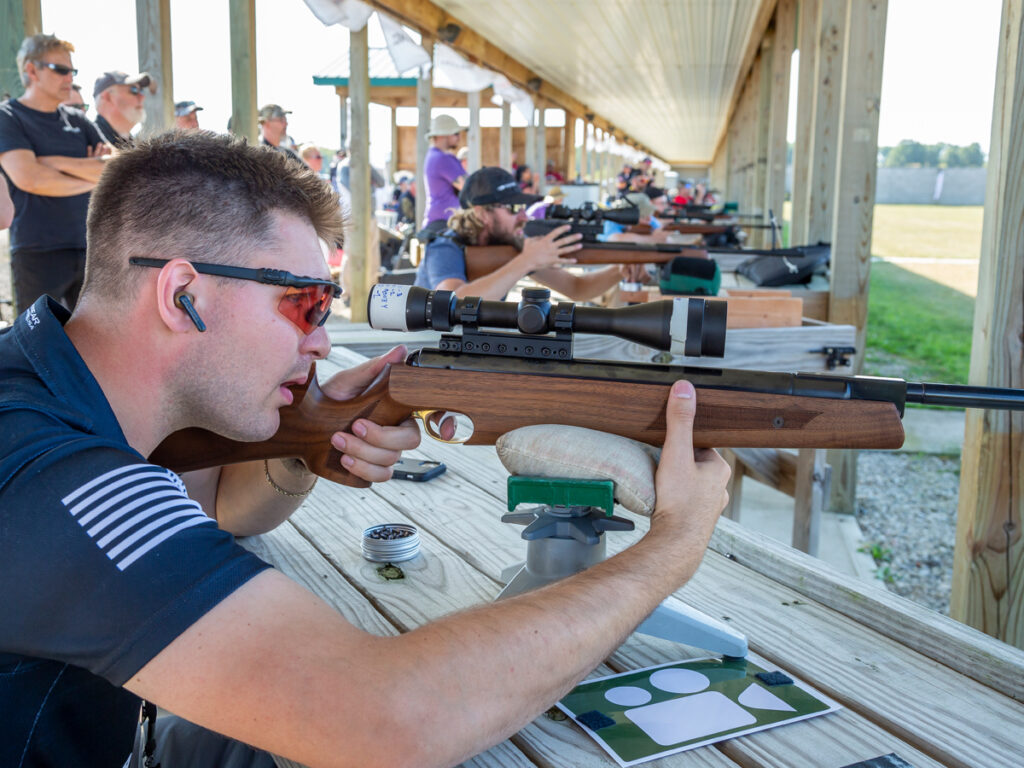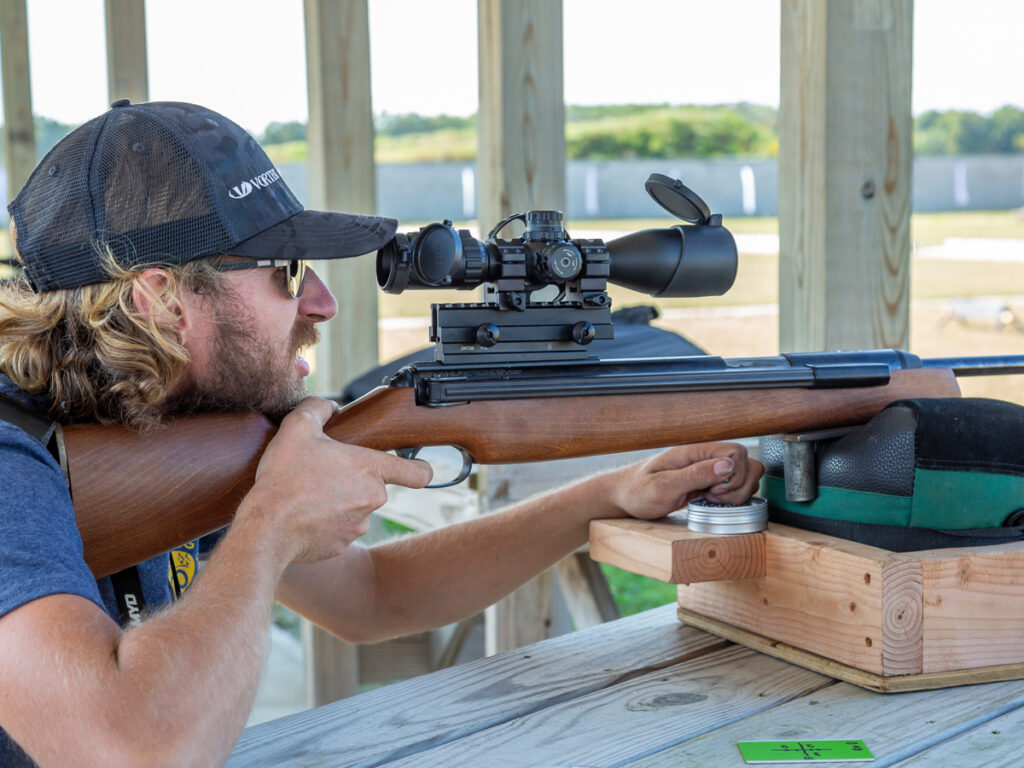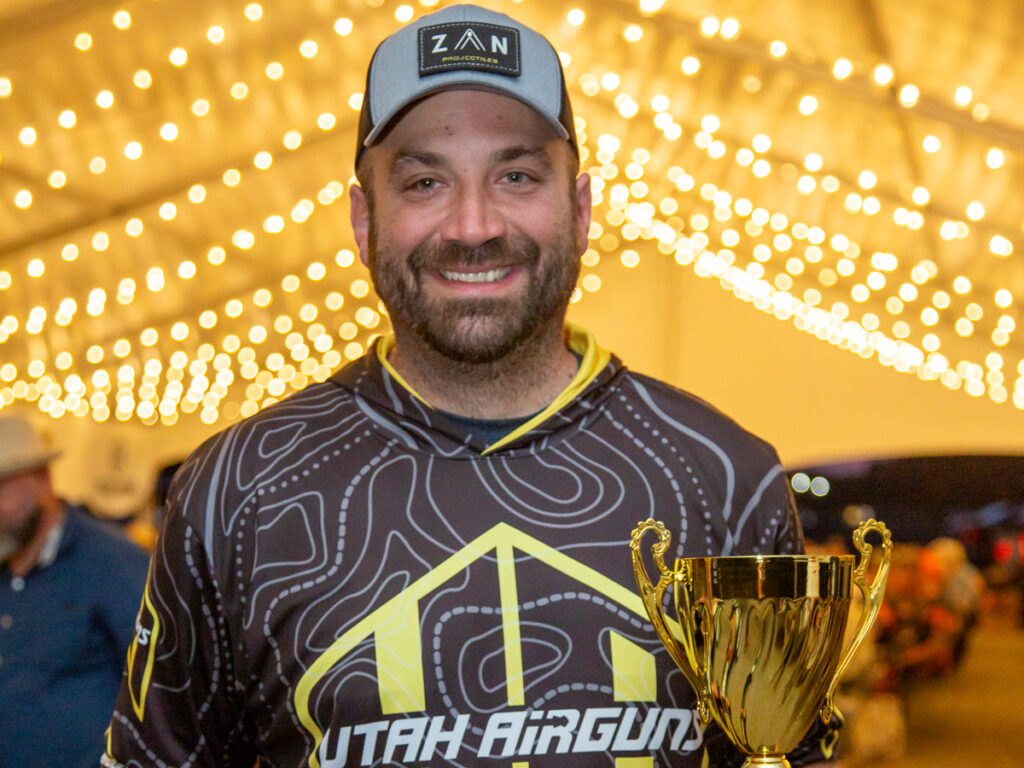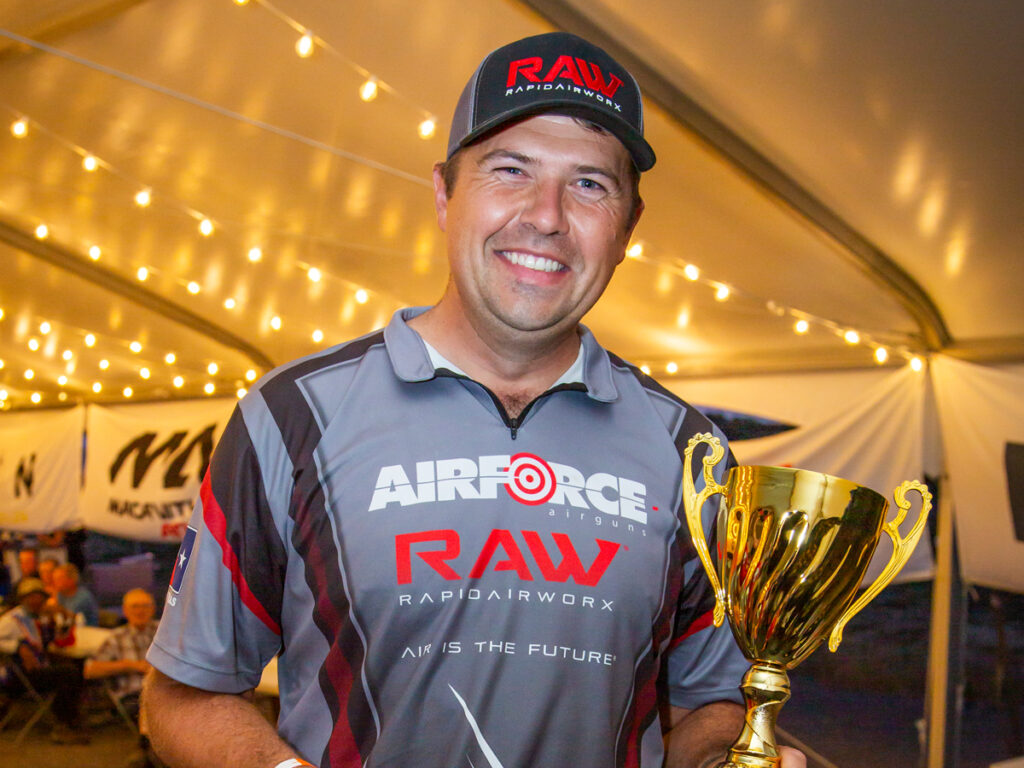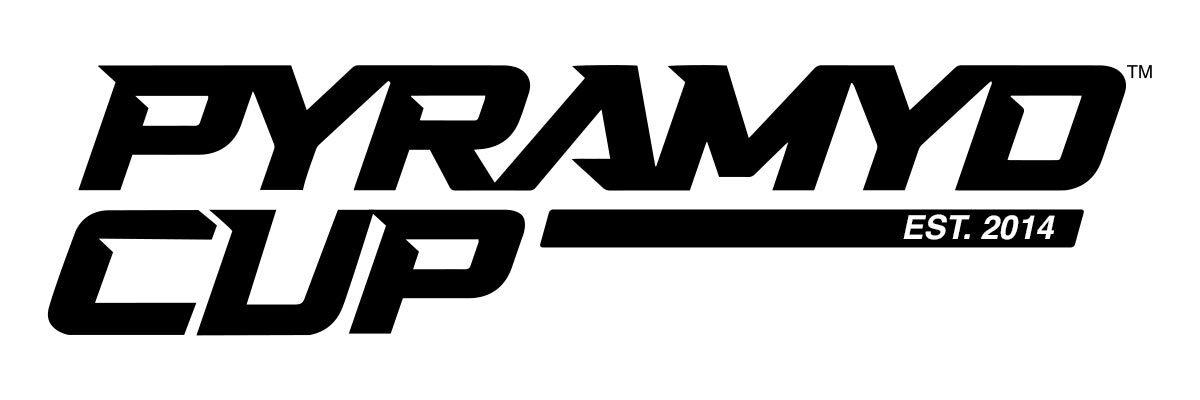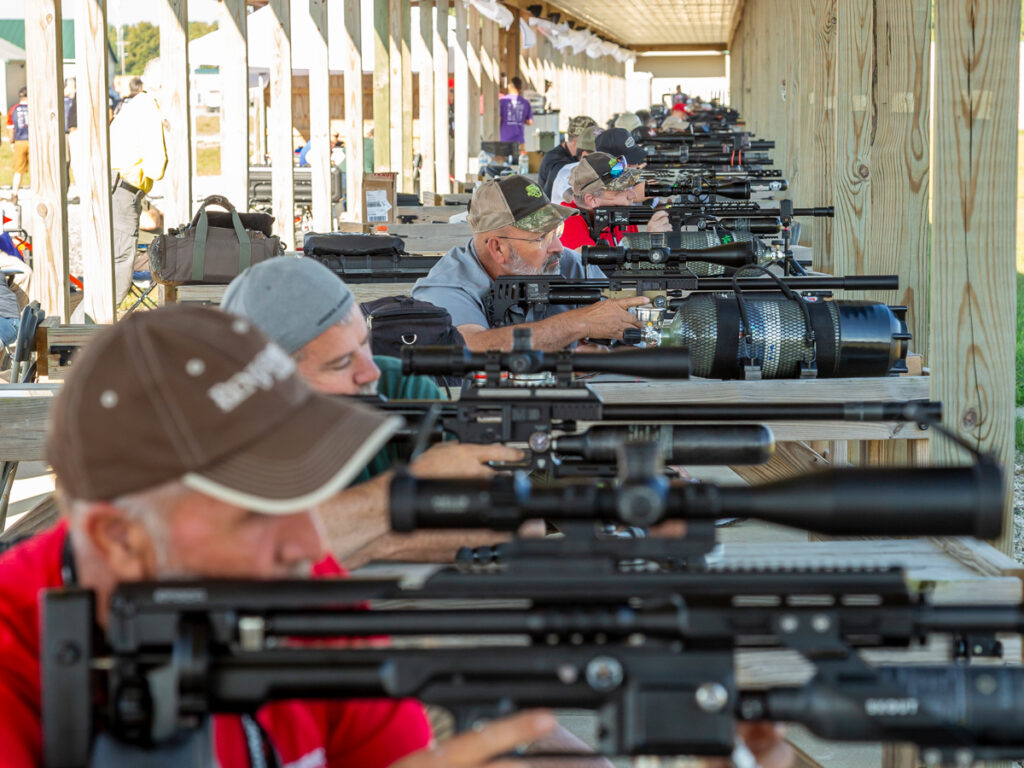
As has become tradition after the Pyramyd AIR Cup, I like to capture my thoughts and memories in a long winded match recap. Bringing the Cup back in 2023, we knew there would be some hiccups, and they presented themselves pretty quickly during the competition. So as we planned for 2024, we set out to address those issues first and foremost. With that in mind, there are a few individuals that I need to thank. The first is Emily Phillippi, our marketing director and organizational champion. The 2023 Cup was her first, and she immediately spotted a number of improvements we could make and the 2024 Cup saw those improvements come to light. The second is Adam Donnett. Adam was our head scorer for Benchrest and had the unenviable task last year of rescoring protested cards, of which there were many. So this year, with some more focused training for his scoring team, and some valuable additions to our staff, Adam resolved to do better….much better. And he, and his scoring team did. There were a handful of protests/challenges on scores between the qualifying rounds and final round, 6 to be exact. Only 3 of those resulted in changes, and all of those changes were just a single point. All in all, I would say that was greatly improved. The event doesn’t run without these two individuals, and I believe all competitors, sponsors and staff owe them a round of applause.
On the topic of sponsors, HOLY COW did we have a lot of industry support for this year’s Cup! All of our demo range bays were filled with sponsors showing off their latest and greatest airgun and optics gear, and there were plenty of sponsors in their own tents showing off their products as well. Companies like Hatsan, FX, Saber Tactical, Umarex, Airforce/RAW, Skout, Crosman/Benjamin, Leapers, Sightron, Zeiss, Hawke, Air Venturi, Buck Rail, Nate Chrony, Vortek Products, Firebird Targets, JTS and so many more. Actually, too many to name if I am being honest, we had over 41 sponsors of the event this year, and 21 of those sponsors were in attendance. Truly, an amazing showing from the industry and we cannot thank them enough for the support.
Last, but certainly not least, I’d like to thank the Cardinal Shooting Center and their staff at Redfeather Outfitters that helped us with pretty much everything we needed while on site. Cardinal is a massive place, and these folks do everything they can to assist when they’re hosting a competition. I also want to thank all of our staff that left the office to attend the Cup and help it run smoothly. We had more help than ever before, and it absolutely contributed to the overall success and smoothness of the event. In addition, I want to give a shout out to Eric Jones and the Central Ohio Airgunners. COA has been running FT matches on part of the course we built at Cardinal for the first time ever this year, and their maintenance of the course and assistance with building new lanes and target placements helps us tremendously and expedites the time it takes to set up the FT portion of the event, which is by far the most time consuming.
Now let’s talk about the competitions.
100 Yard Benchrest
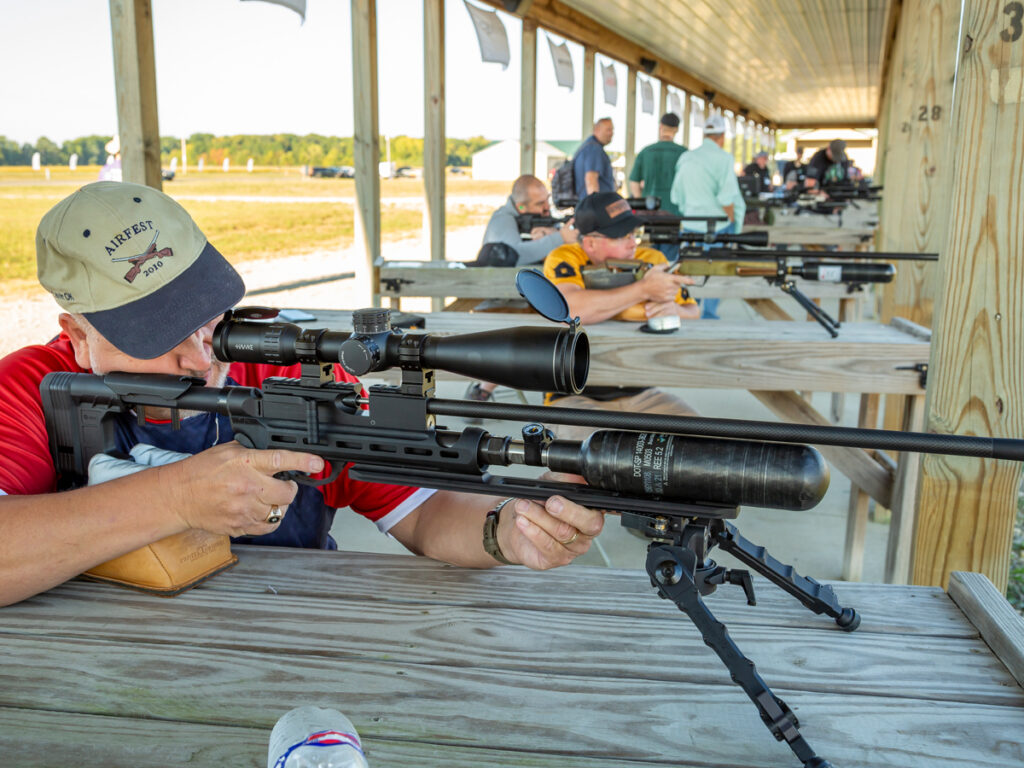
We are fortunate that Cardinal has an absolutely massive 100 yard range, in fact, there are 48 benches that are usable for competitors, meaning we can run heats/groups of up to 48 shooters. We ran three groups, each shooting two qualifying cards. And we take the top 12 from each group to shoot the finals. Within about a month of the entries opening for the Cup, Benchrest was full with 144 competitors signed up, and we had a waitlist that was nearly 50 people long. As shooters dropped out, we had folks in line to take those spots. Obviously, as you get closer to the event dates, it becomes more challenging for shooters on the waitlist to react quickly to a spot opening up. I was surprised by the number of no-shows and last minute drop outs for this year, but in total we ended up with 117 shooters actually competing in the event.
You can see a list of the shooters and their equipment for each event HERE (please keep in mind, this list is as the shooters themselves entered it). Some interesting things to point out for the benchrest equipment:
- 52 Competitors were using FX rifles this year, that’s 44% of the field.
- 17 shooters chose Skout Airguns, which is up considerably from 2023.
- 14 of the guns on the line were the Karma Red Panda, which seems to be the hot ticket having just started to ship in the summer of 2024.
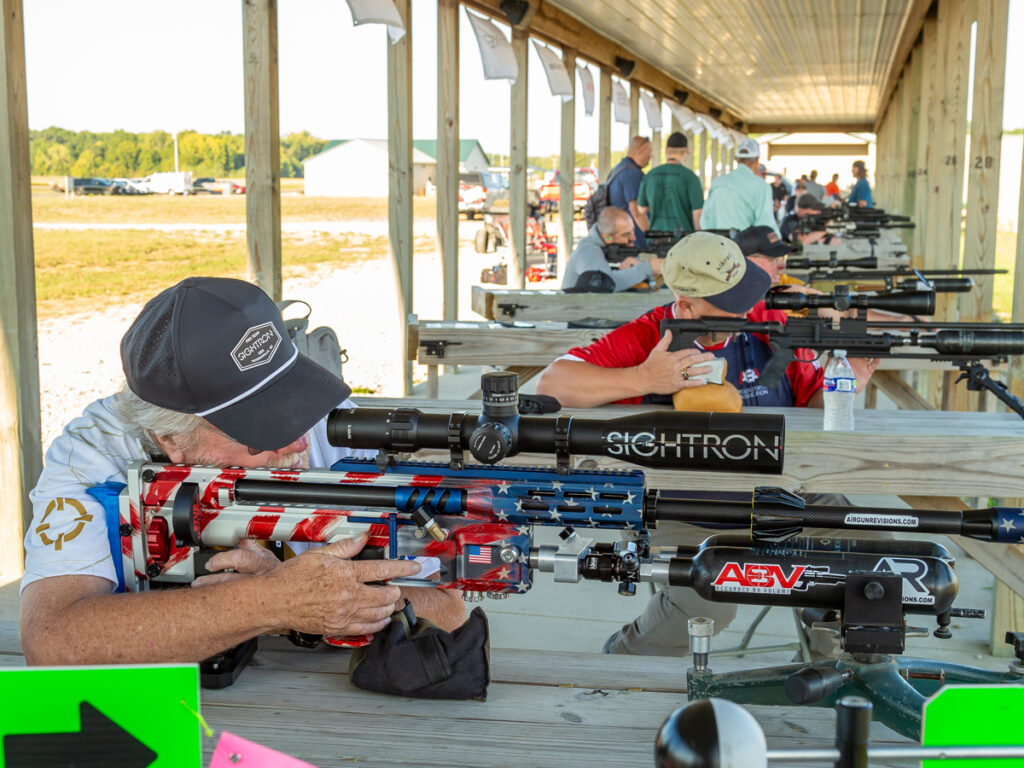
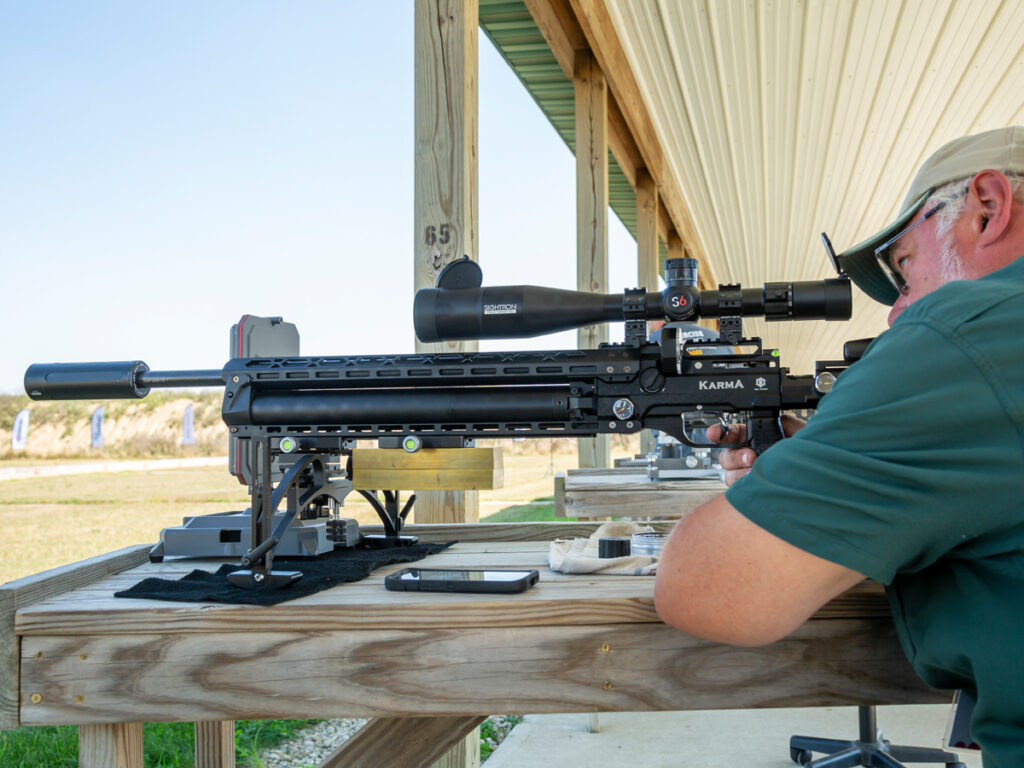
Also of interest, it would seem that while JSB is still the predominant pellet choice (53%), JTS and AEA pellets are certainly gaining ground and popularity for 100 yard precision pellet shooting. AEA pellets accounted for 28% of the lead used, nearly all of those in .30 caliber. Additionally, most competitors are still choosing the .30 caliber as their go-to for this competition. Over 65% of the field (maybe a few more) in fact.
One change we made to the event itself this year was a bench shift between the first and second cards. So when shooters checked in, they drew their bench position for card one, and they were also able to see their position for card 2. You can see this shift reflected on the scoring sheet HERE. This shift helps remove some of the good/bad fortune that comes with shooting near the middle or ends of a range with berms on either side. I think the shooters found this to be an overall improvement to the competition experience.
The wind can be quite tricky out at the 100 yard range at the Cardinal Center, and it certainly proved to mystify a bunch of shooters, even during the morning when the winds were supposed to be calmer. At one point during the early afternoon, there was so much wind that it actually lifted one of the tents we had near the range right off of the ground! Thankfully, we were able to get it under control without anyone getting hurt and without it disrupting the shooting, but that should help illustrate the amount of wind present.
One thing we did not change was the format and schedule for shooting, which is different than some other 100 yard competitions. We run both qualifying cards in the same day. So shooters in group 1, end up shooting at 9:15AM and 12:15PM, group 2 shot around 10:15AM and 1:15PM and group 3 went at 11:15AM and 2:15PM. This gives everyone a nice break, and an opportunity to eat, grab coffee and water and check out the vendor demo ranges. It also gives shooters an opportunity to go prepare their guns for the Gunslynger competitions and Field Target competitions if they need to.
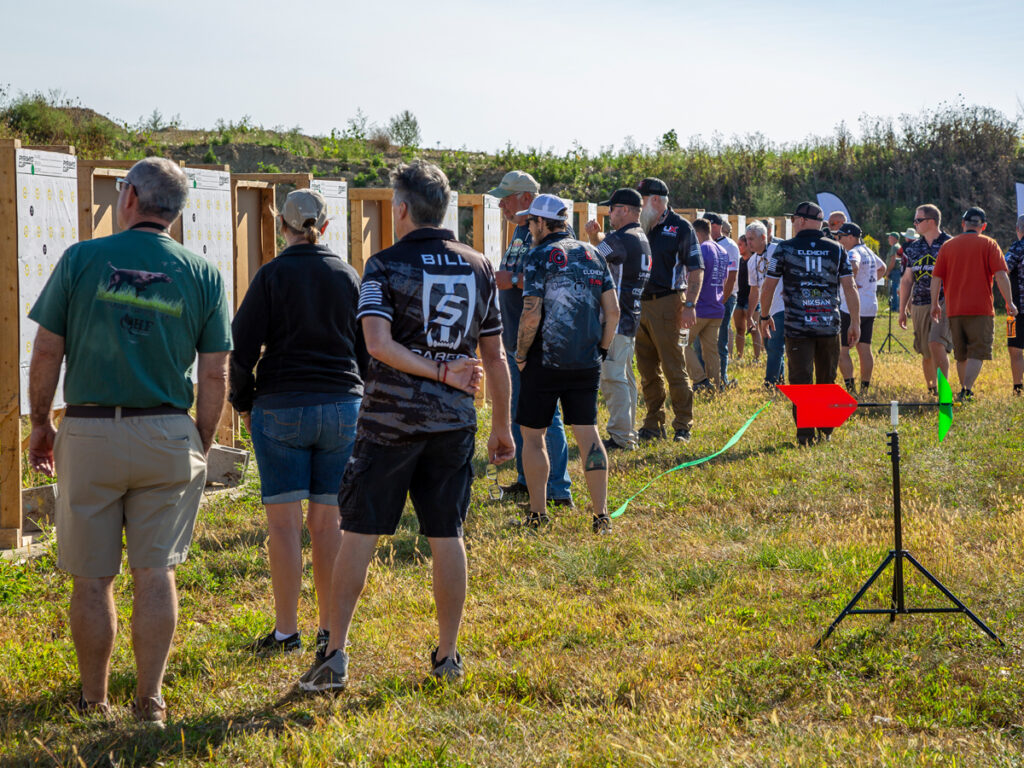
Thankfully, our scoring team worked quickly and accurately, and by the time our Gunslynger event was well underway, all of the scoring had been completed. Finalists would need to wait until Saturday for their shot at a top 10 spot and a cash prize that accompanies it. But for this year, we did something a little different, and awarded $100 to each of the top qualifiers from each group. In Group 1, that was John Rupple, shooting a 450 with 9x’s. In Group 2, Keith Short shot an impressive 463 with 6x’s. And in Group 3, Adam Migel shot a 450 with 3x’s.
Saturday morning, shooters that made the finals arrived as early as 7:30AM to the range, and were greeted by their bench assignment and an hour or so to practice from their finals bench. We generated the finals bench positions completely at random on a computer, as time for a draw is limited. We also cut out the benches on the ends of the range, to move everyone closer to the middle of the range and away from the berms. After getting the final targets up, we had a short briefing for the shooters and everyone settled into their benches for the final 30 minutes of competition.
As an outside observer (I was sitting just behind bench 24 in an elevated RSO stand with a good view of the line), I find it interesting to watch the cadence that shooters fire in. Some are slow and steady, others find a wind they like and let shots rip as fast as they can. I couldn’t tell you which is better, but it’s interesting to observe. About 10 minutes in, I see Bill Squillace throw his fist in the air in excitement. He turns around with a smile on his face, his eyes find mine, and he whispers “238!” I congratulated him and told him we would have to wait and see, but that sounded like a great score and should certainly put him in contention.
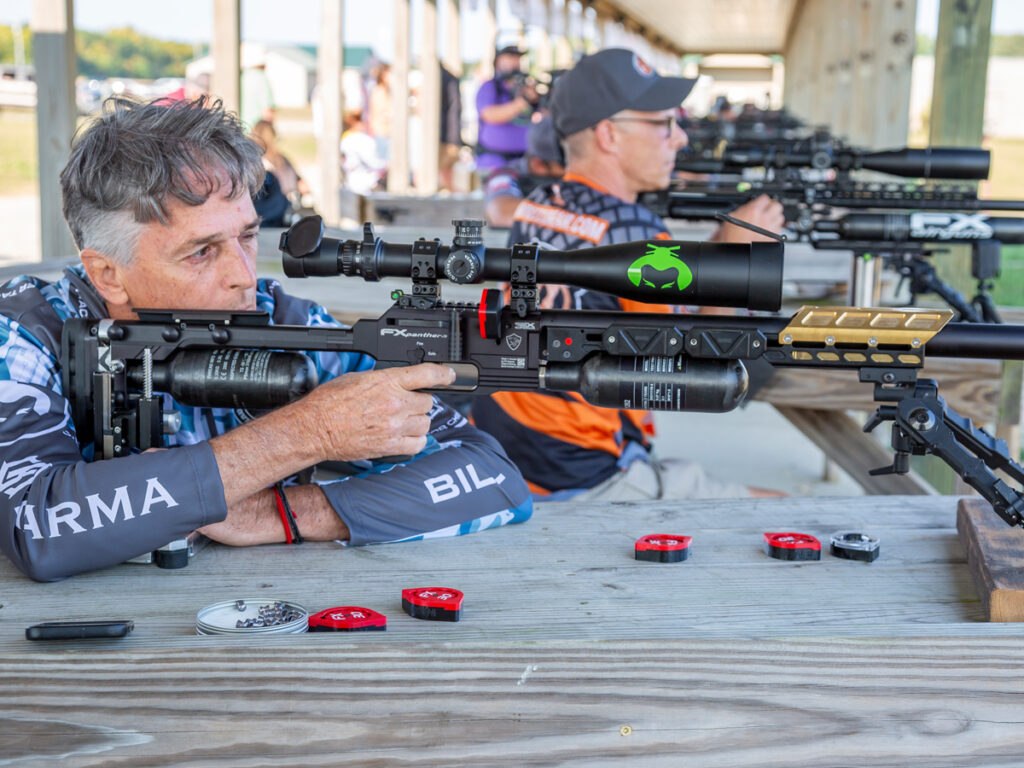
As the round wrapped up, and shooters made their way down range, you could see the mix of emotions. Nervous energy, turned into happiness or disappointment. Shooters gathered around Rick Rehm’s card, Bill’s card, Val Simmons’ card and Dan Carpenter’s cards counting up the scores. It seemed those 4 were the odds on favorites based on what I saw. But it all comes down to how some of the close shots plug. Is that 8 close enough to become a 9? Can that 9 break the 10 line? We would find out later that evening at the banquet.
Your Top 10 Benchrest Scores:
1st – Bill Squillace – 238 7x ($7,500)
2nd – Rick Rehm – 234 7x ($5,000)
3rd – Val Simmons – 233 4x ($3,000)
4th – Dan Carpenter – 231 7x ($2,000)
5th – Luke Sowinski – 230 3x ($1,500)
6th – Danny Mancini – 226 4x ($1,200)
7th – John Rupple – 226 3x ($1,000)
8th – Nikolai Boldov – 225 4x ($850)
9th – Rob Moore – 224 5x ($700)
10th – Alex Hatfield – 224 2x ($500)
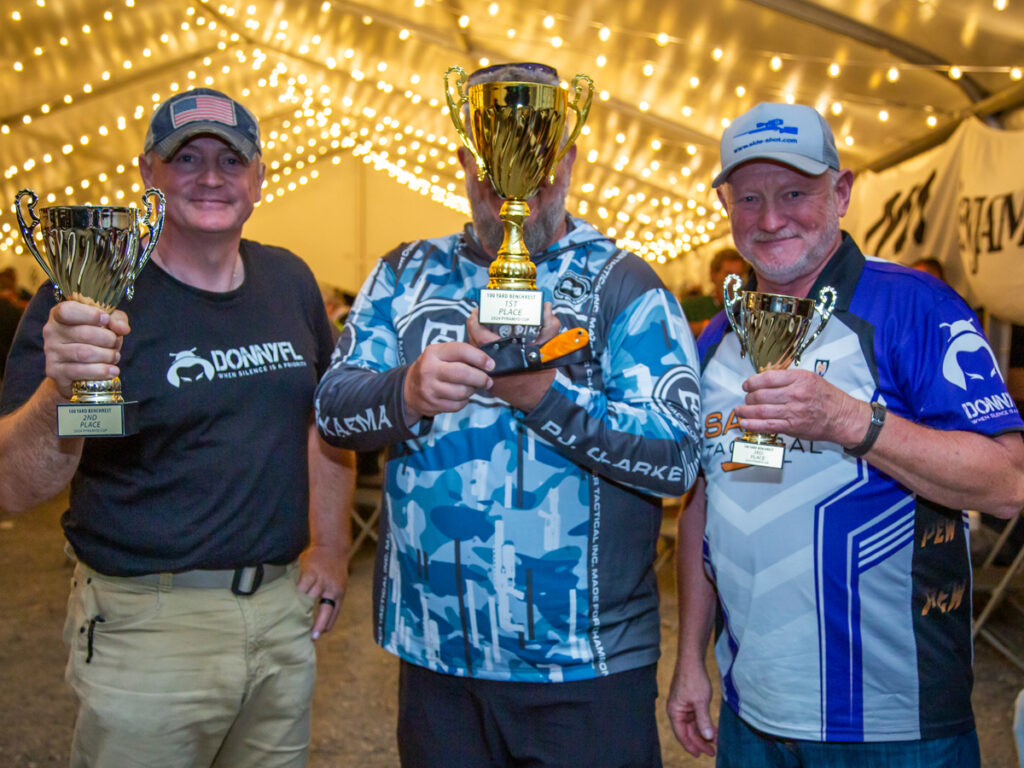
There are a few interesting things to point out about the top finishers and scores. Last year’s winning score was a 232 8x, and as you can see, our top 3 shooters this year all beat that mark. 10th place last year shot roughly the same score as 10th place this year did (224 5x last year), so it would be fair to say that a 224 and above can get you into the money at the Cup. 4 of our Top 10 finishers this year, also placed in the Top 10 in 2023, which makes me wonder if there’s something to be said for having experience on a particular range.
Congrats to all of the winners. We saw some phenomenal shooting on the bench this year, and we are already making plans to make the 100 Yard Bench Competition bigger and better for 2025!
Full Benchrest Qualifying and Finals Scores can be seen HERE
Gunslynger
If you’re not already aware, our Gunslynger competition is a speed silhouette competition, where shooters must knock over 20 1/10th scale animal silhouettes with the smallest (chickens) at 10 yards, 25 yards (pigs), 40 yards (turkeys) and 55 yards (rams). This is a bracket style, single elimination tournament, where the winner walks away with $1,500! We have two divisions, springer and magazine-fed PCPs. Let’s start with the springers.
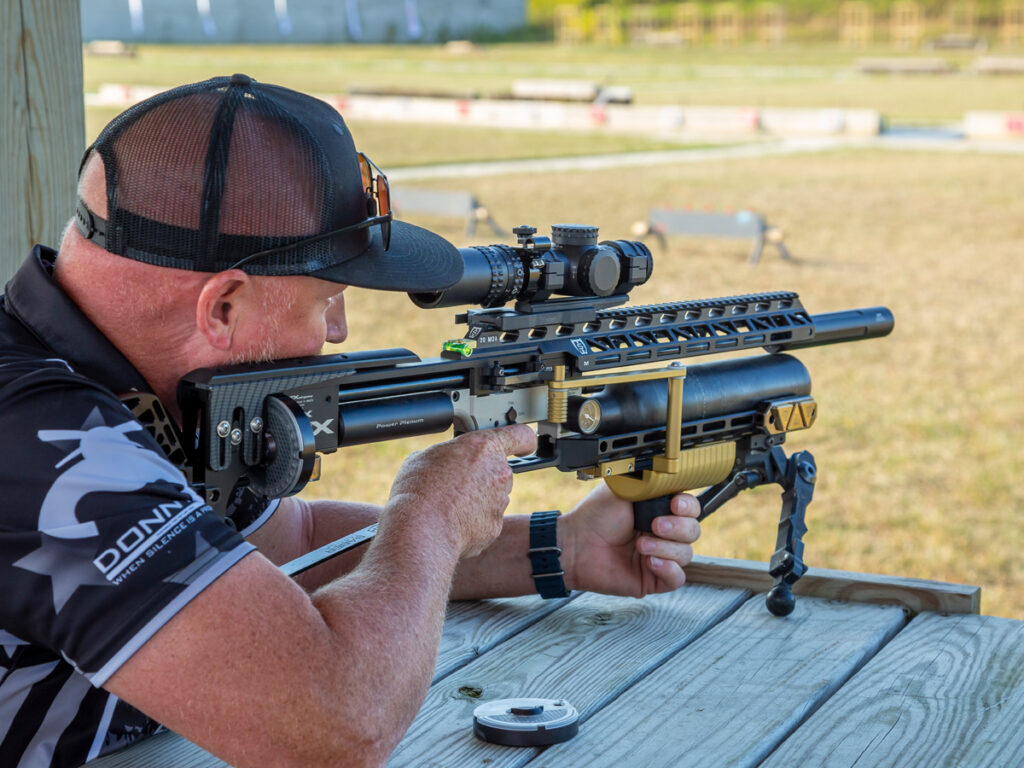
As I said, this competition places shooters into a bracket (think March Madness) and they face off against a different competitor in each round until there is only one remaining. As the springers take a bit longer to go through the targets, we began instituting a time limit on each round last year. It’s a 5 minute timer, and if the shooters haven’t finished all 20 targets in that time, the shooter with the most targets down advances. In the event of a tie, shooters will go for just one of the remaining targets (of the same size and distance), and the shooter that drops it first advances.
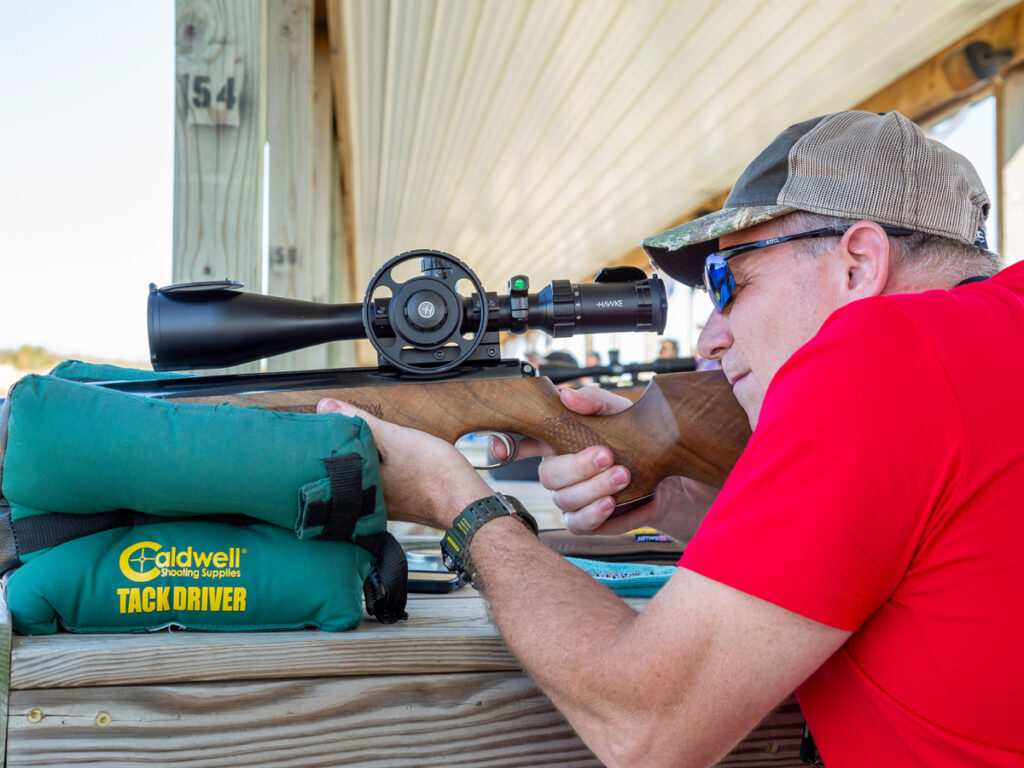
Early on, the top shooters made themselves known. Ryan Spanagel was the only competitor in the first round to finish all 20 targets in the 5 minute time, making him a clear favorite. Nic Gregoris and Mark King also took their first round matches with room to spare when time expired. In the second round, Cameron Kerndt (reigning World Field Target Springer Champion), made his presence known after receiving a bye in the first round. He shot from his typical FT position, and it proved to be better than a bench. In his half of the draw, Spanagel made his way through the second round, clearing all 20 targets again and defeating John Bagakis. Cameron and Ryan would face off to see who would advance to the finals and who would have a shot at 3rd place. On the other side of the draw, Nathan Thomas narrowly defeated Nic Gregoris and Mark King took out Lucas Marusiak to set them up for a semi-final showdown.
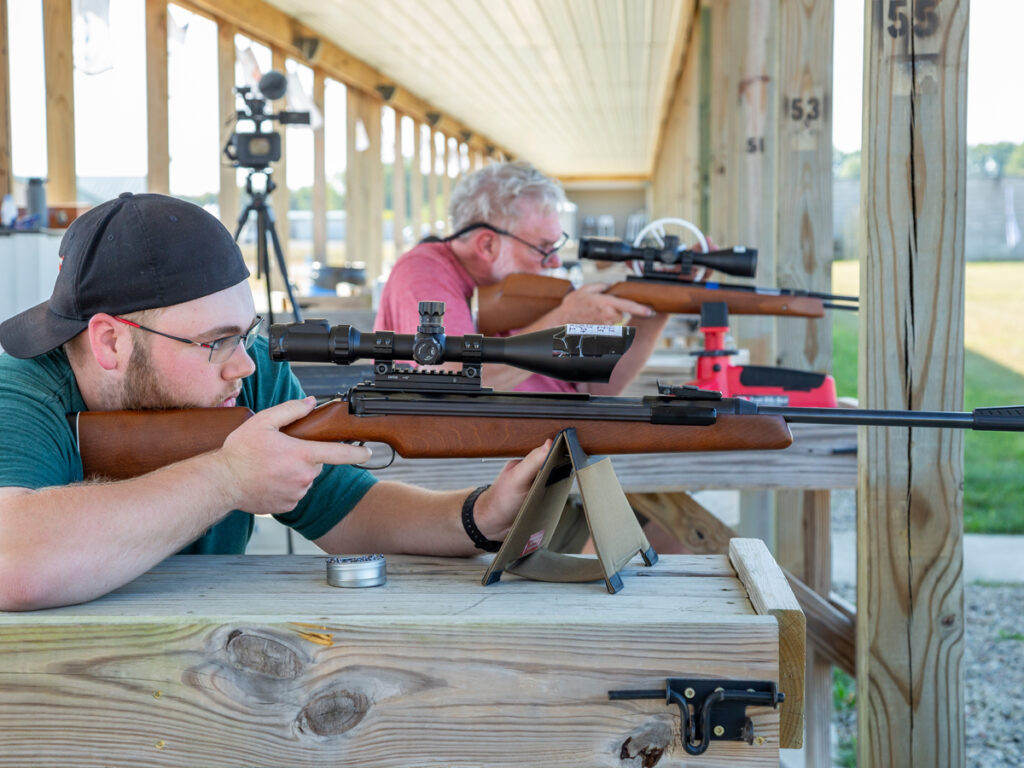
Nathan was the clear favorite in that match up based on past performance, and pulled through for victory. Advancing to the Finals and a shot at the $1,500 prize. On the other side of the draw, Ryan and Cameron battled it out, and this was the first round that Ryan was unable to complete in the 5 minutes. This gave Cameron the chance he needed to edge out a victory, to take him and his trusty TX200 to the finals. Ryan and Mark King would square off in the third place match, and Ryan found his form again, taking Mark out and claiming the $500 third place prize. With Nathan and Cameron set to go for the final, it was a clear clash of styles with Cameron shooting from the ground, FT style, and Nathan shooting his Diana 48 from the bench. For the final, we remove the time limit and let the shooters fight it out until the last target falls. It took a little bit over the 5 minutes but eventually, Cameron managed to bring the last target down, and claim 1st place!
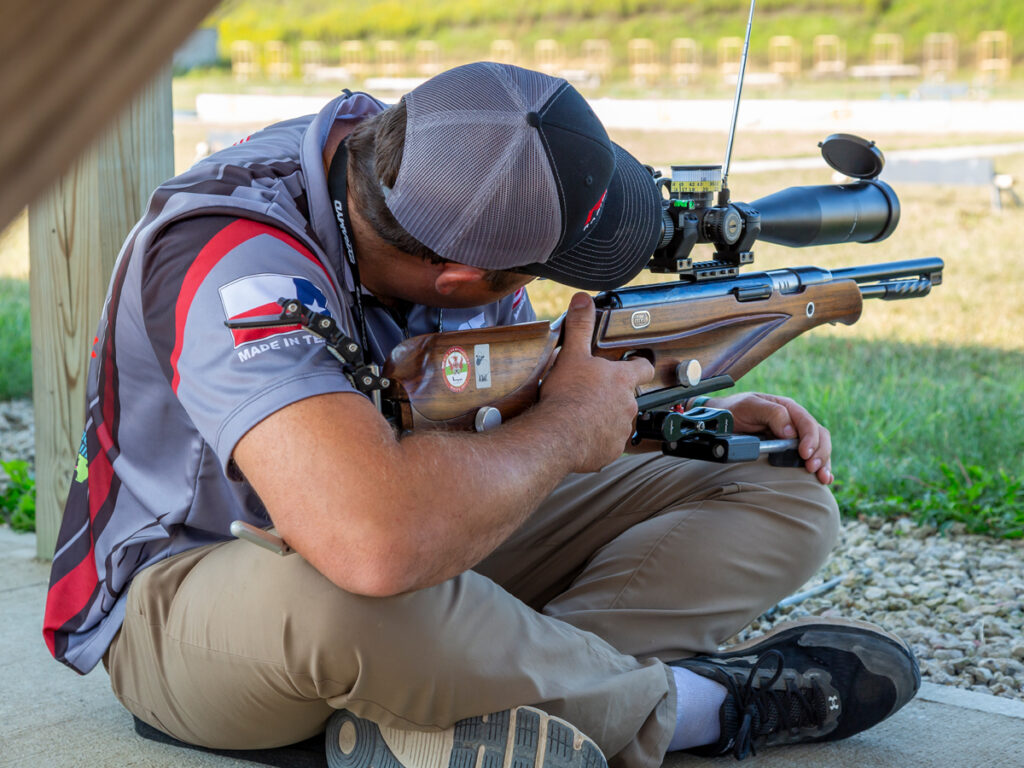
As we moved over to the Mag-Fed PCP division, there are a lot more shooters to deal with, and the times are A LOT faster. This is the greatest spectator sport in the airgun world as far as I am concerned. With 42 shooters, it was a pretty full draw, but a number of shooters received byes in the first round (the brackets are randomly generated). As we worked our way through the draw, Jeremy Vanschoonhoven and John Rupple looked to be on a collision course in the top part of the 1st quarter, with Nathan Thomas burning through opponents on the bottom part of the quarter. In the 2nd quarter, PJ Clarke, who placed in last years mag-fed competition, looked to be in good form, but Wes Crisp and Warren Carter both posed strong threats. On the other side of the draw, in quarter 3, Adam Migel and Thayne Simmons were both ones to watch, with John Bagakis also looming. The 4th quarter of the draw looked to be surely in control of Nic Gregoris, but not without a challenge from Alex Hatfield.
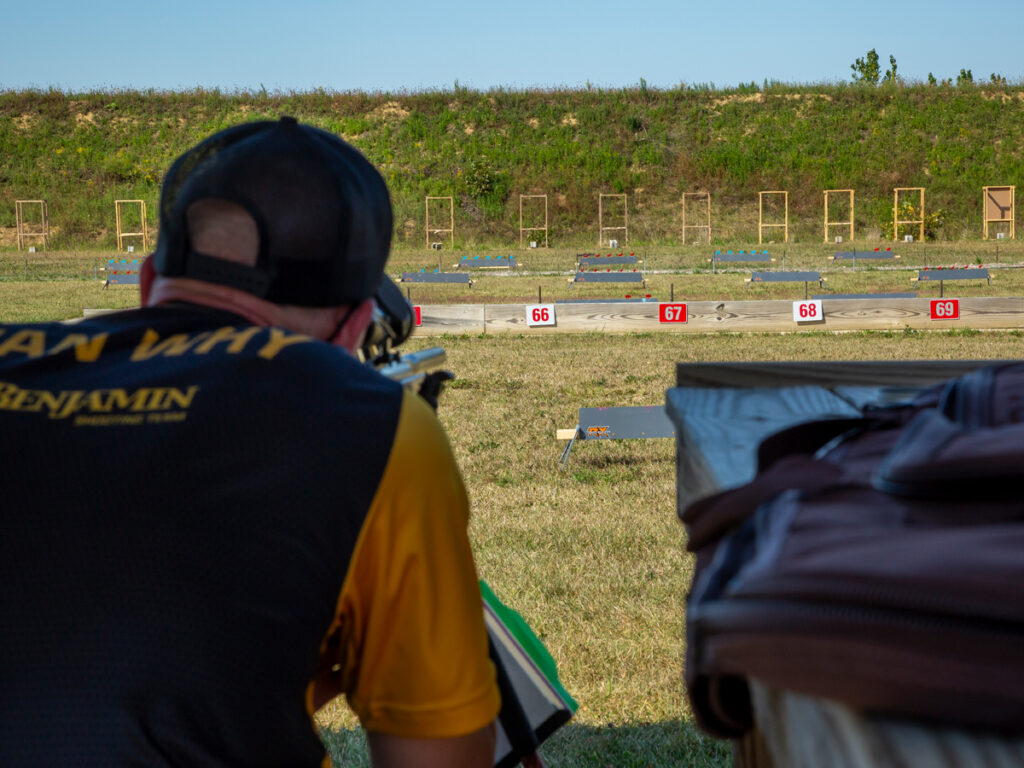
Interestingly, in that bottom quarter, Nic would end up beating Alex, and eventually meeting Alex’s dad, Todd Hatfield in the quarter finals. Nic would continue his winning ways to advance to the Semi’s. In the 3rd quarter, Adam Migel took down Thayne Simmons to advance to the quarterfinal match against John Bagakis. It was clear that Adam had been practicing for this, as he worked his way past John to secure his spot in the semi-final against Nic.
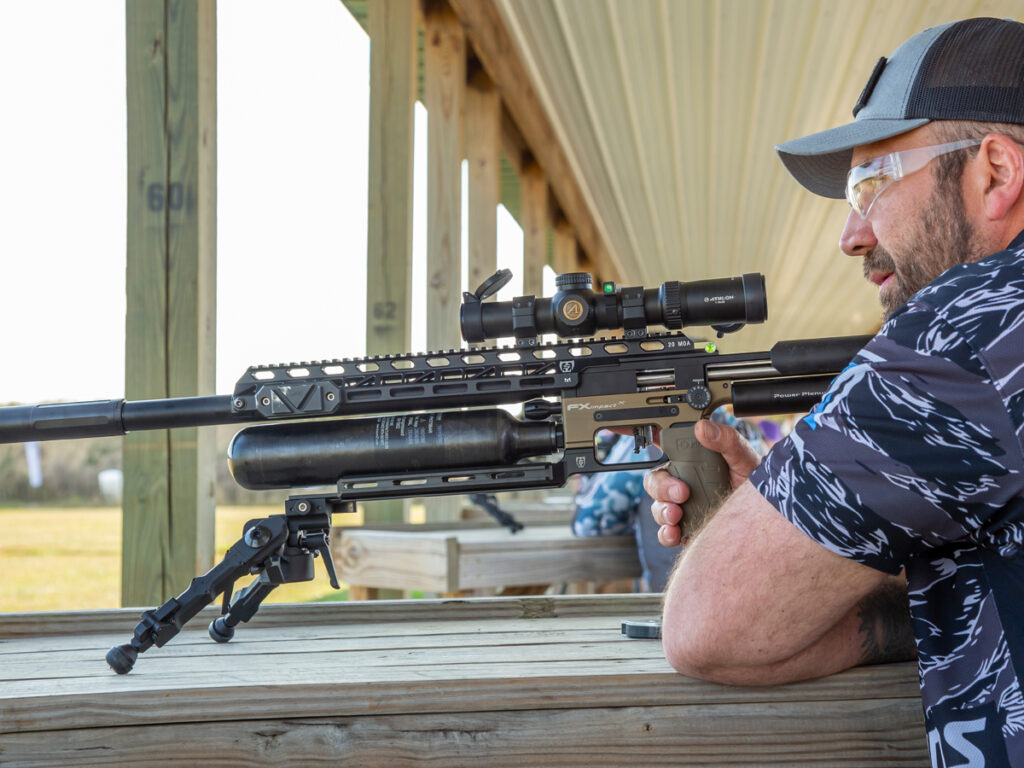
On the other side of the draw, Jeremy Vanschoonhoven and John Rupple met in the round of 16, with John just edging out a win. His quarterfinal opponent was Nathan Thomas, and Nathan came ready to play. He beat John to advance to the Semi’s. In the other quarter, Wes Crisp and PJ Clarke squared off with Wes coming out on top. He faced Warren Carter in the quarterfinals and was able to find a way to pull out a win and move to the semi’s.
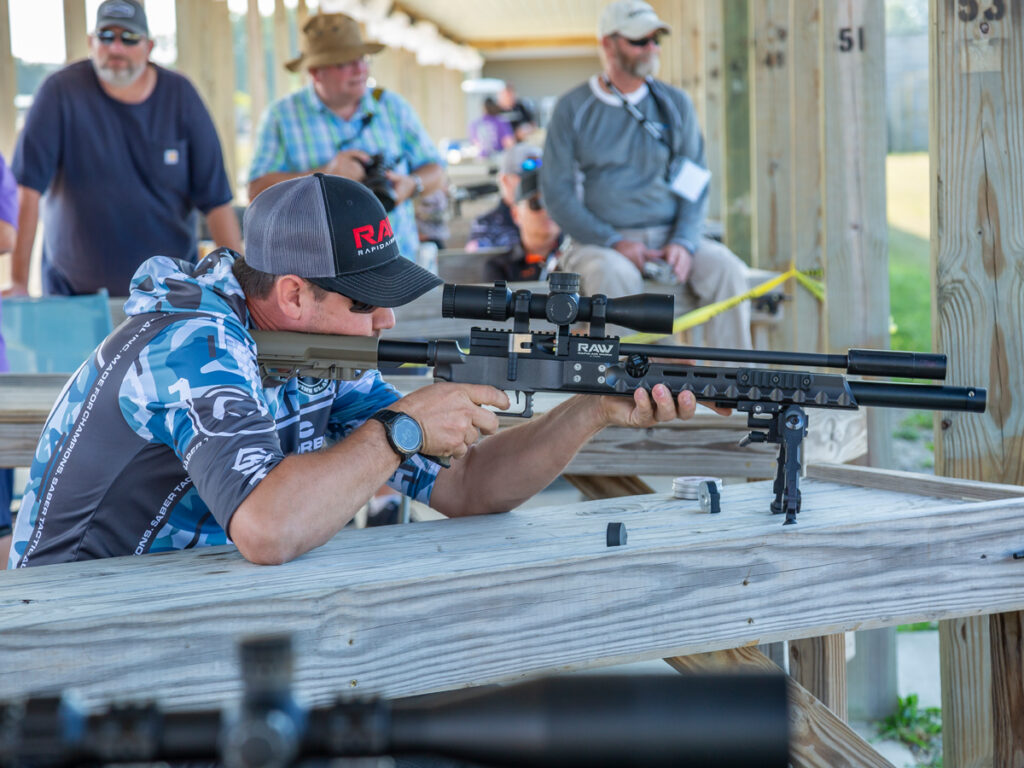
The semi-finals are where I break out the stop-watch and see how fast these guys are going. What most don’t realize is that 1/10th scale silhouettes are really tiny, especially when you’re trying to go fast. It requires a blend of precision and speed that is hard to capture. Most let their need for speed overwhelm the precision, and end up with too many misses to advance. But when a shooter finds that perfect balance, we see blistering times. Nathan Thomas and Wes Crisp were on two benches, with Adam Migel and Nic Gregoris on another two. While Wes and Adam ultimately won to advance, it was Adam that was done first. Knowing that the other guy was just faster than you, can absolutely get into a shooter’s head in the next round. As Nic and Nathan took each other on in the 3rd place match, I am sure Wes and Adam eagerly and anxiously awaited their final.
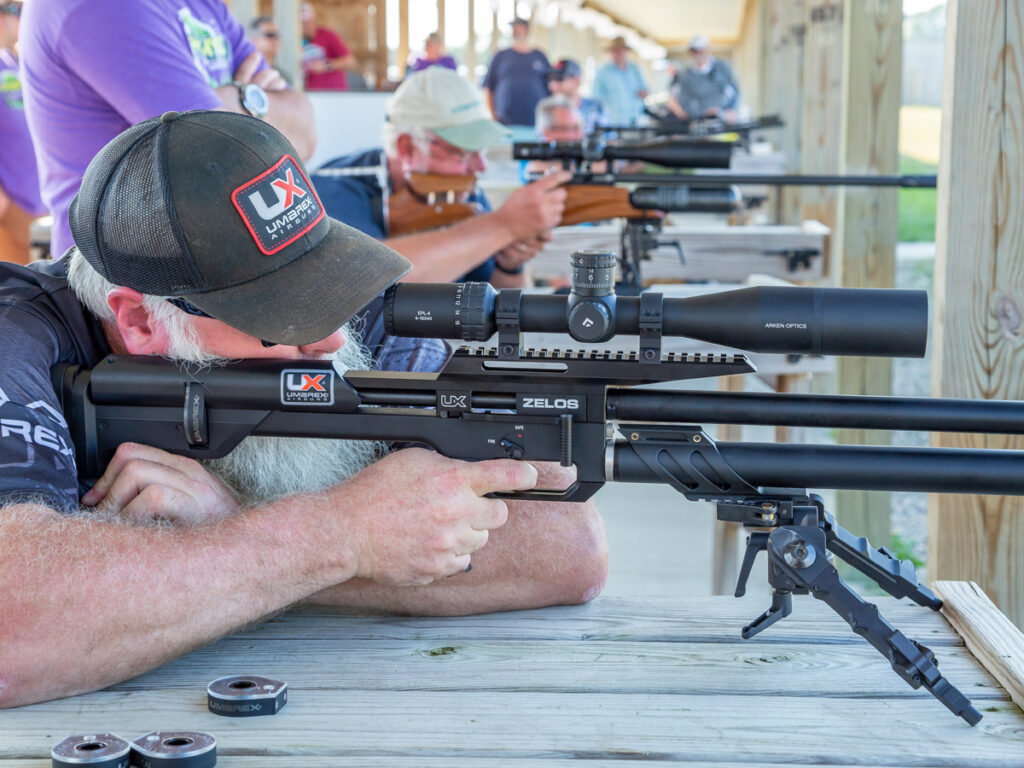
Nic and Nathan put on a good show, but Nic ultimately was just too fast for Nathan and took the win with his Air Arms S510 to claim third place and the $500 prize. Now onto the final! Adam and Wes settled into their benches and as they did, I wondered to myself about what kind of time we would see these all get knocked down in. Remember, in our mag fed division, shooters can only start with 10 rounds in their first magazine, but all mags after that can be loaded to their max capacity. Adam had been taking the same approach as Bill Rabbitt had in 2023. He would shoot one shot, and then change to his high capacity mag and blaze through the targets. After all, the rules don’t say that you have to shoot all 10 rounds in your first magazine before changing. Though, they might say something like that next year, I suppose you all will have to wait and see.
When I called “Go!” Adam and Wes began ripping pellets down range with great speed. Adam jumped out a clear lead that Wes simply couldn’t catch up to, and when he knocked his final target down, a cheer erupted from those viewing the final. Adam Migel was is our 2024 Mag Fed PCP Gunslynger Champion, and took home $1,500 for his troubles! And just as a general point of reference, Adam’s final round took him just 35 seconds to complete!
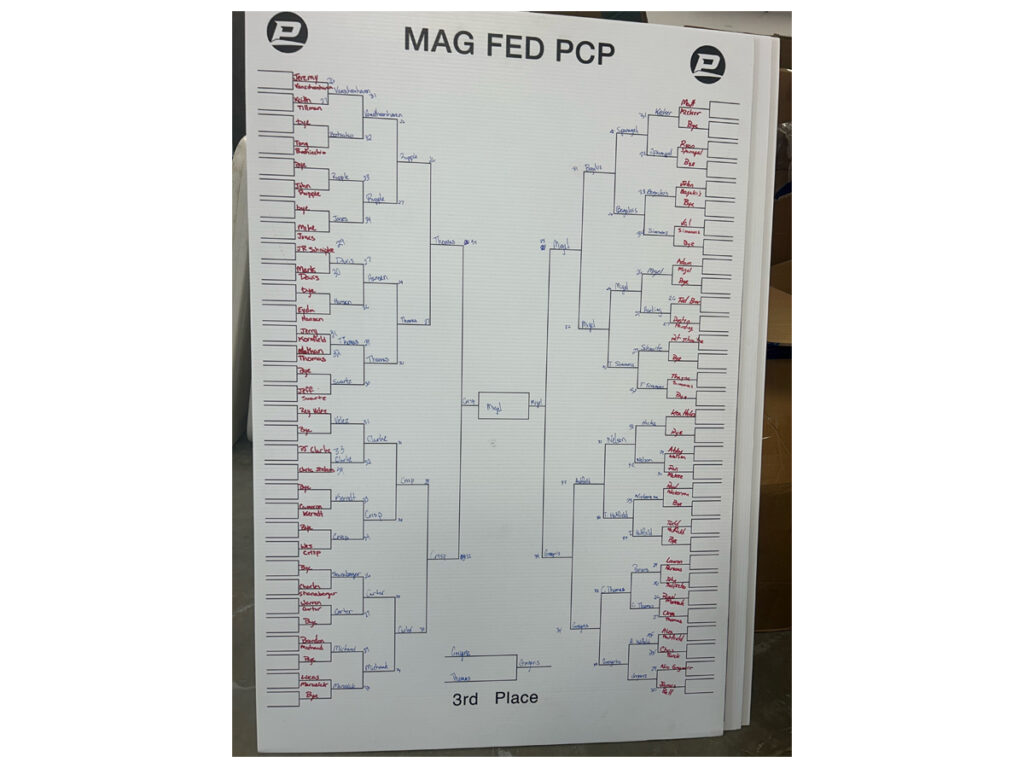
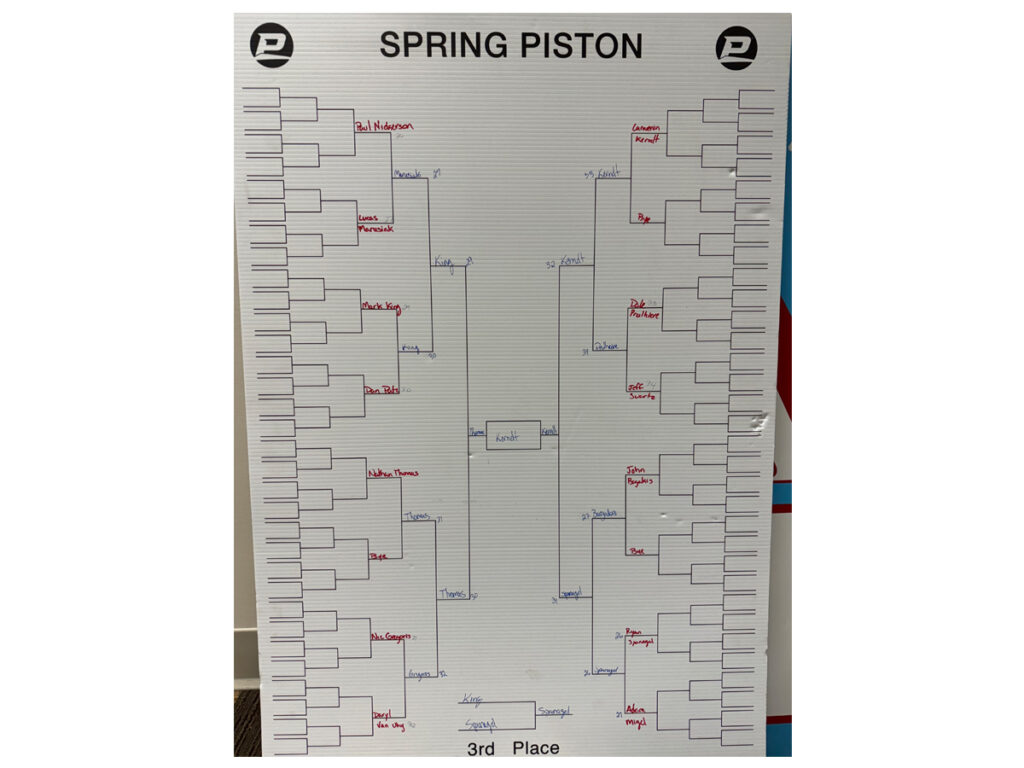
Field Target
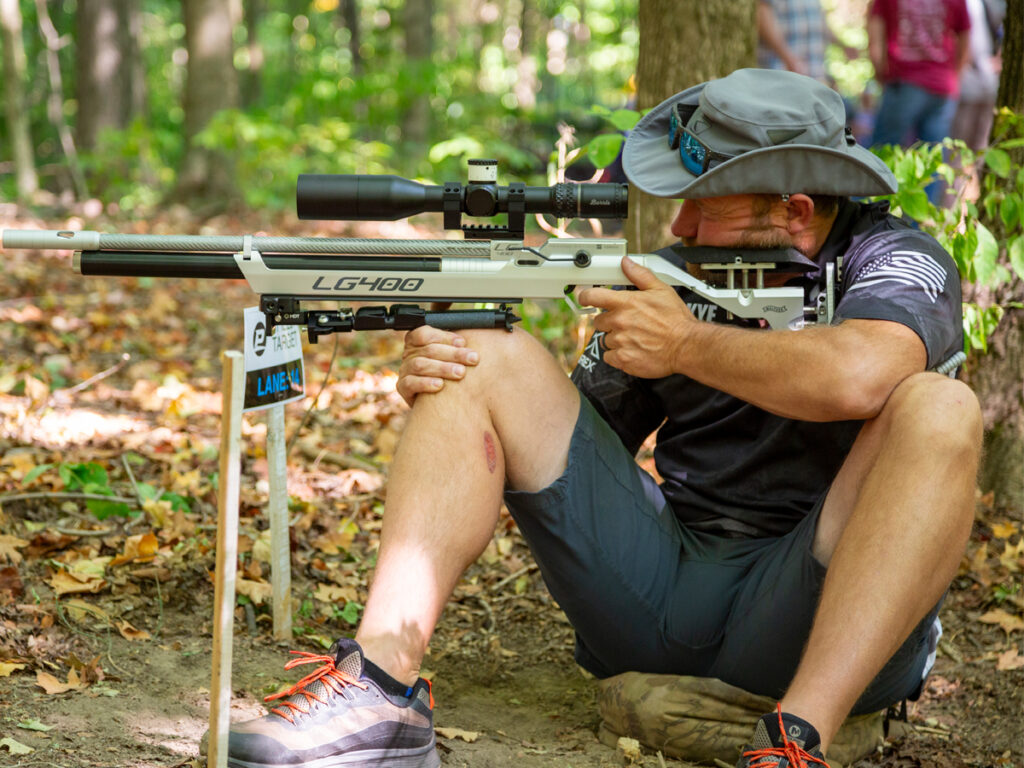
We made a change to the scheduling for the Field Target match at this year’s cup, that may have thrown some shooters off, but it was done for good reason. Typically, Grand Prix FT matches are run Saturday and Sunday, but we chose to run the Cup’s FT matches on Friday and Saturday. Here’s why:
- We wanted ALL shooters to be involved in and be able to enjoy the shooters banquet on Saturday evening. Typically, we had our FT awards banquet on Sunday after shooting concluded, this schedule change allowed us to do all of the awards at the big banquet.
- We wanted everyone that started the FT event, to finish the FT event. Typically, some shooters would go a little too hard in the paint at the banquet on Saturday night, and not wake up in time for the Sunday morning shoot. So moving the last day to Saturday made sense there.
- We had a number of suppliers mention that ending the event on Sunday made it difficult to get to other commitments (or back into the office) the next week.
Like Benchrest, Field Target was also completely sold out, but a number of no-shows and a few last minute cancellations left us with just under 100 shooters competing. This is, by US Field Target standards, one of the (if not the) largest matches by headcount and all of them would have their work cut out for them. We built two separate 60 shot courses that ran together. A Yellow course and a Blue course. From a technical perspective, the two courses rate similarly but I’ll get into the details for those interested to understand the differences.
The blue course featured 13 of 30 targets over 40 yards (the minimum is 9). The average target distance was about 35.6 yards, and the overall Troyer rating was a 31.23T before environmental factors came into play. Since all of the targets were painted fairly light colors, there’s not much in the way of darkness to add, but there was plenty of wind on either end of the course, and a few lanes in the middle see some wind as well. After wind is added, the Troyer is just under a 34T, which is much more appropriate when you look at the scores.
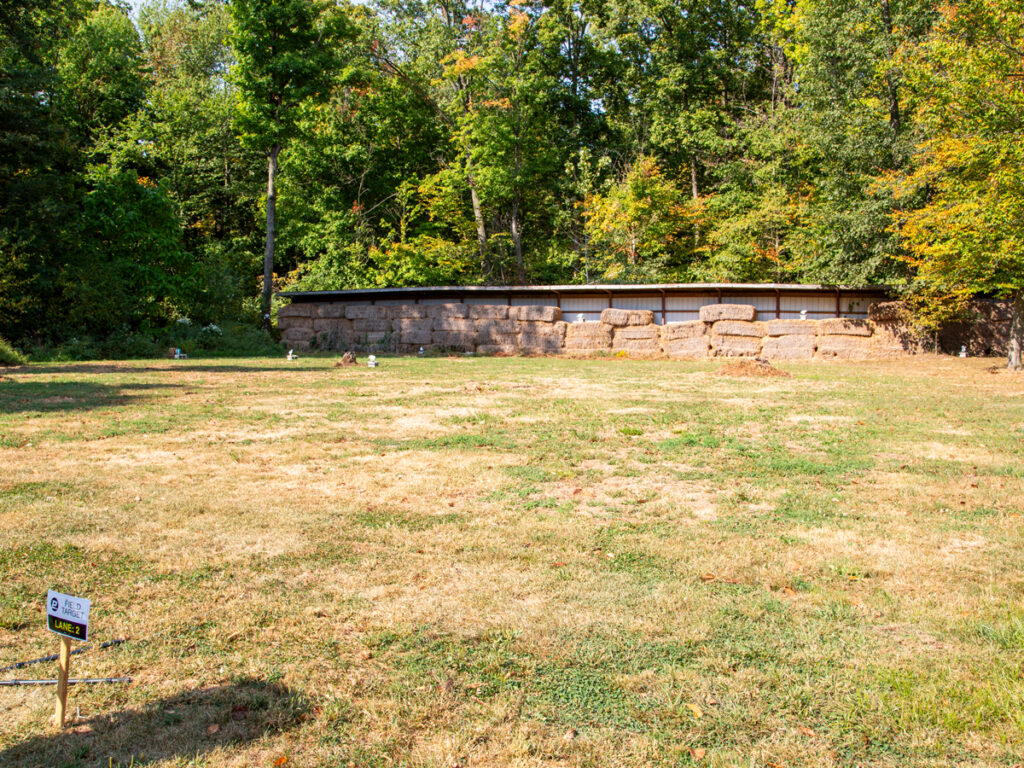
The yellow course is not that different, featuring 14 targets over 40 yards and an average target distance of 35.4 yards. The overall Troyer came out a little higher before environmental factors at a 31.88T. After wind was added to a handful of targets, the Troyer comes to a 34.59T. Again, much more reflective of the actual challenge that the course presented and in line with how many shooters performed. Both courses featured 3 lanes in an open field area where the wind was absolutely wild at times. Shooters wind flags would blow one direction, flapping violently, on one shot and then seemingly switch directions with the same intensity for the next. The wind also plays a part in the lanes near the edges of the trails on both sides of the course, this is where the wind would be somewhat dampened by the trees and brush, but not entirely. And how much is being blocked is always up for debate. If you haven’t figured it out yet, Field Target can be a very complicated game.
After a long day on Friday, shooters emerged from the woods in varied mental states. Some shooters had high expectations that they failed to measure up to, others achieved their expectations and some were just happy to have finished. In WFTF PCP, Lauren Parsons and Gerald Long both came off the course tied with 56/60. Lucas Marusiak was the lone 3rd place shooter with a 53, followed by a small group that finished on 52. Suffice it to say, that it was all to play for on Saturday. In WFTF Piston, Leo Gonzales had a stranglehold on the field, shooting a 55. Placing him well ahead of Brad Troyer (49) and Dan Putz (48). In Open PCP, Paul Porch had a similar lead, also shooting a 55, with his nearest competition (Charles Wright) on a 49.
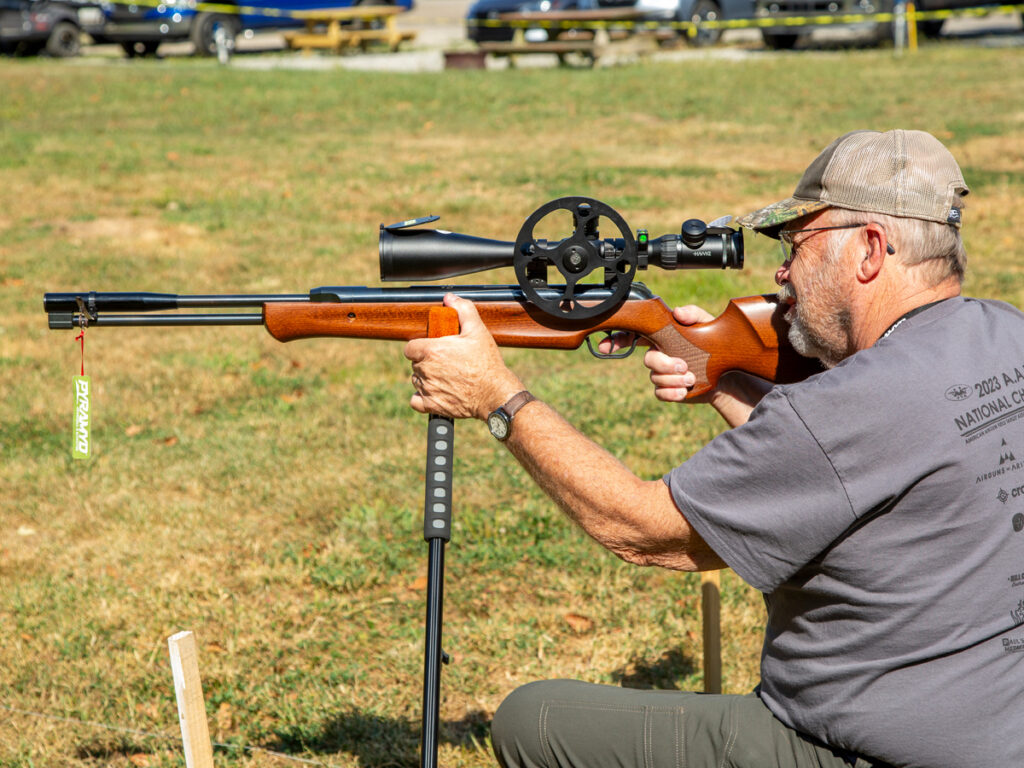
In Hunter PCP (by far the largest division), there were two at the top after the first day. Brandon Michaud and Andy Gonzalez both posted respectable 51s. They were followed closely by Doug Cunningham at 50, and a few others on 48 and 49. And in Hunter Piston, Greg Shirhall had a commanding lead over the entire field, posting a 46 on day one. Finishing a whole 15 shots ahead of his nearest competition.
Some of our FT shooters had Bench finals Saturday morning, but most were able to enjoy a fairly relaxing morning, hitting the sight in range before heading over to the FT course. We had a quick shooters meeting just to cover a few things I saw on day one, and let everyone know what the plan was in the event of a shoot-off. Day two was a faster day than day one. We tend to get a lot of new FT shooters at the Cup, and the first few lanes of day one, they are trying to figure things out. With the help and guidance of the more experienced shooters in their groups, they are able to get a handle on things pretty quickly. By day two, these folks are raring to go, and don’t need much help, so this tends to speed things up.
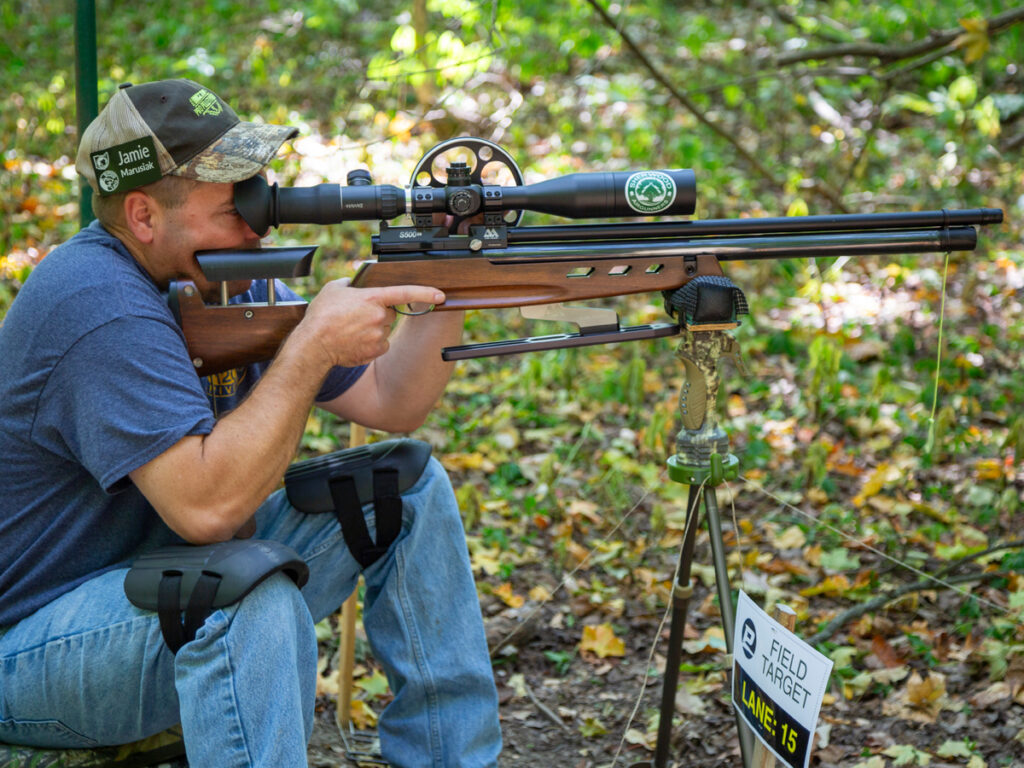
I spent much of day two enjoying good conversations with shooters and others walking through the course and taking in the match. It was a nice relaxing time honestly. And that’s a bit of a rarity as a match director. As we got towards the end of the day, I checked in on the last few squads where the top shooters were to see how things were shaping up to determine if there would be any shoot-offs. There was only one that was close, and that was in Hunter PCP. It looked like Doug Cunningham and Brandon Michaud flipped their day one results, with Doug finishing one ahead of Brandon, making them tied up overall. But more on that in a moment.
In Hunter Piston, Greg Shirhall maintained his lead over the pack, shooting a 39. He finished overall on an 85/120, 18 shots ahead of Tony Pellegrino in second and the rest of the division. In WFTF PCP, Gerald Long and Lucas Marusiak tied on a 54 for the day, putting Gerald a few shots ahead of Lucas. But Lauren Parsons pushed past them both, ending on a 57 to post the top score of 113/120. Leo Gonzales maintained his lead in WFTF Piston, but did have to fight off a push from Brad Troyer, who clawed back a few points overall with a good day two score. Ultimately, Leo finished on a 106, beating Brad by 4 shots. And in Open PCP, Paul Porch maintained his lead over Charles Wright despite Charles beating Paul on day two. Paul managed a 102, with Charles finishing on 98.
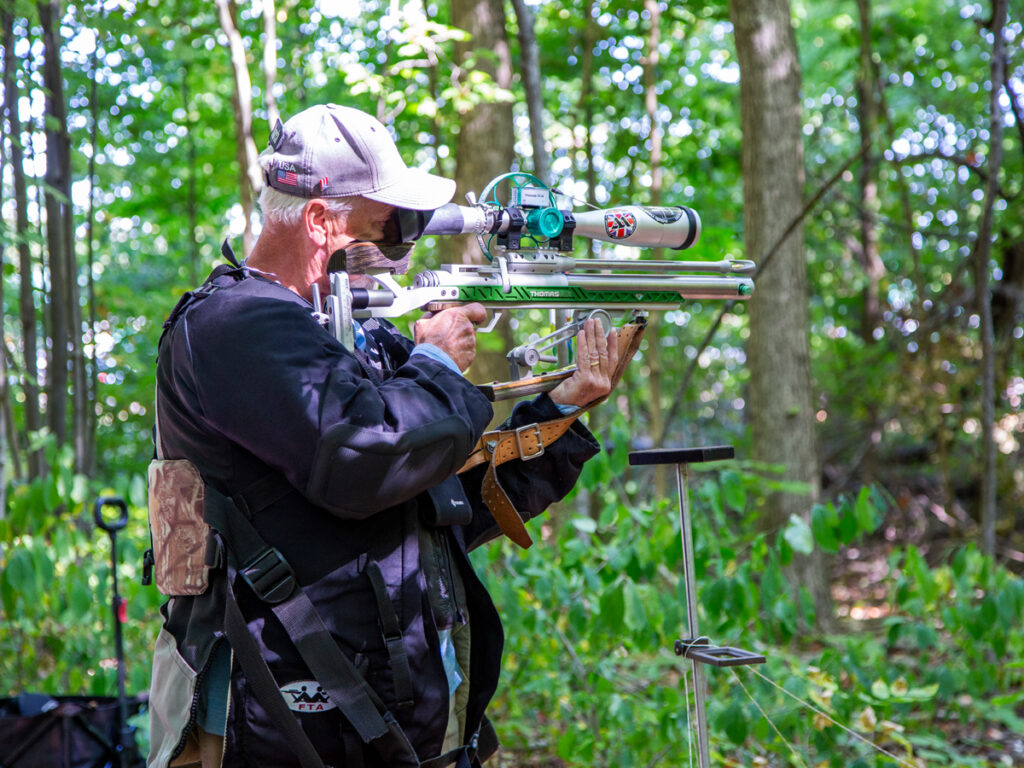
Off we headed to the 100 yard range, to handle our Hunter PCP shoot-off between Doug Cunningham and Brandon Michaud, to decide 1st and 2nd place. We set two full size targets in the mid-high 40 yard range. Let’s call it 46 yards. Both shooters settled in, and I should mention that the wind was absolutely howling! With a steady left to right wind, I started a one minute timer, and let both shooters work. Doug quickly took his shot, splitting on the edge. Brandon steadied himself, selected his wind hold and sent a pellet right to the kill zone of his target, knocking it over and claiming the win! A very decisive end to a close two days of shooting!
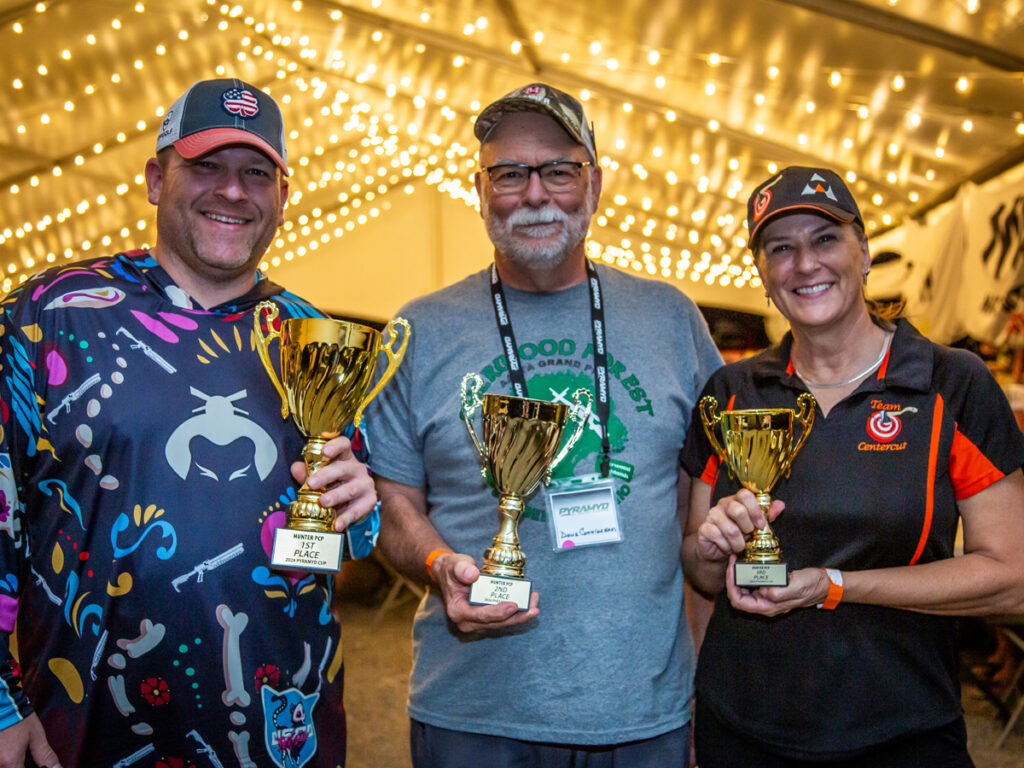
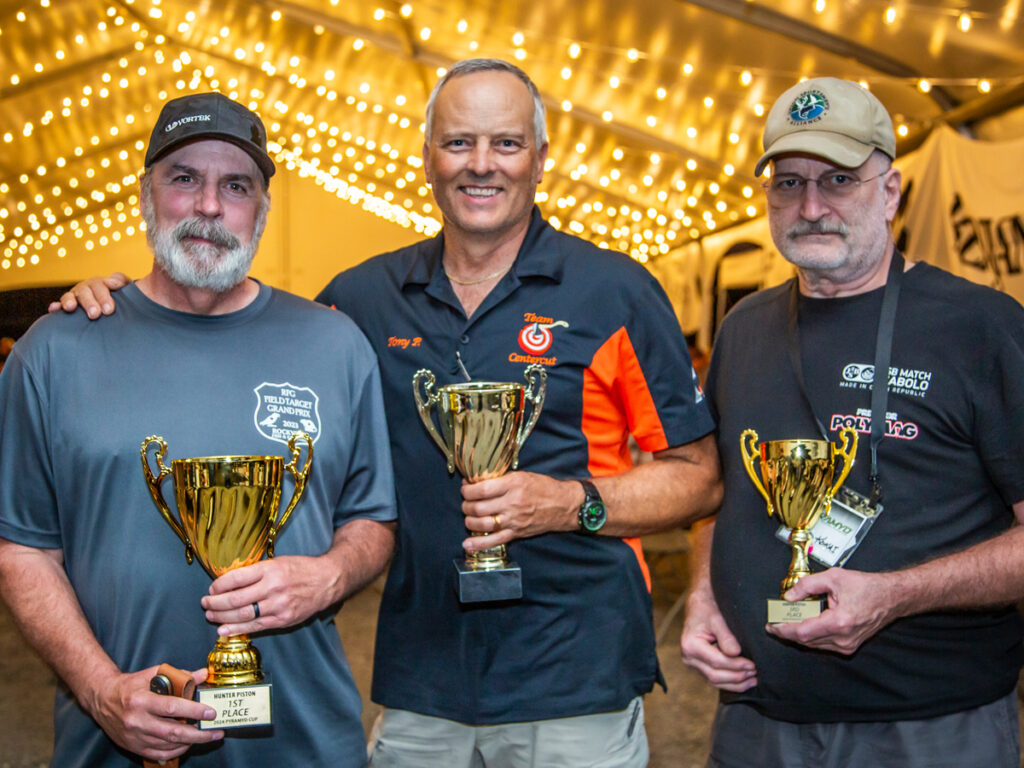
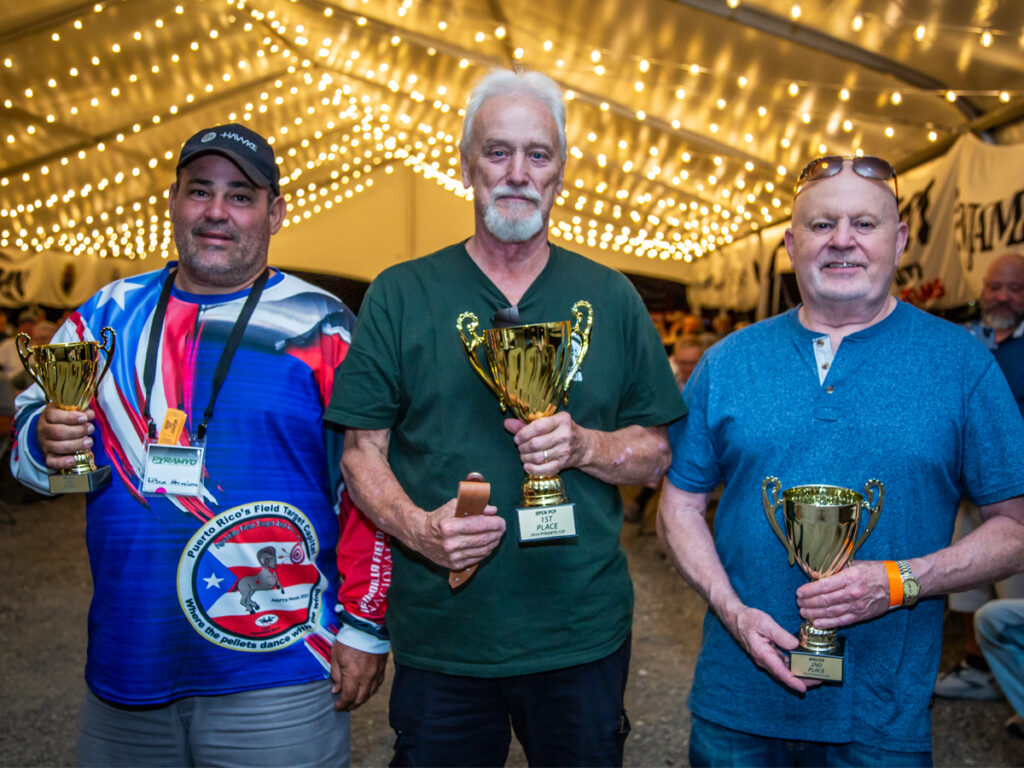
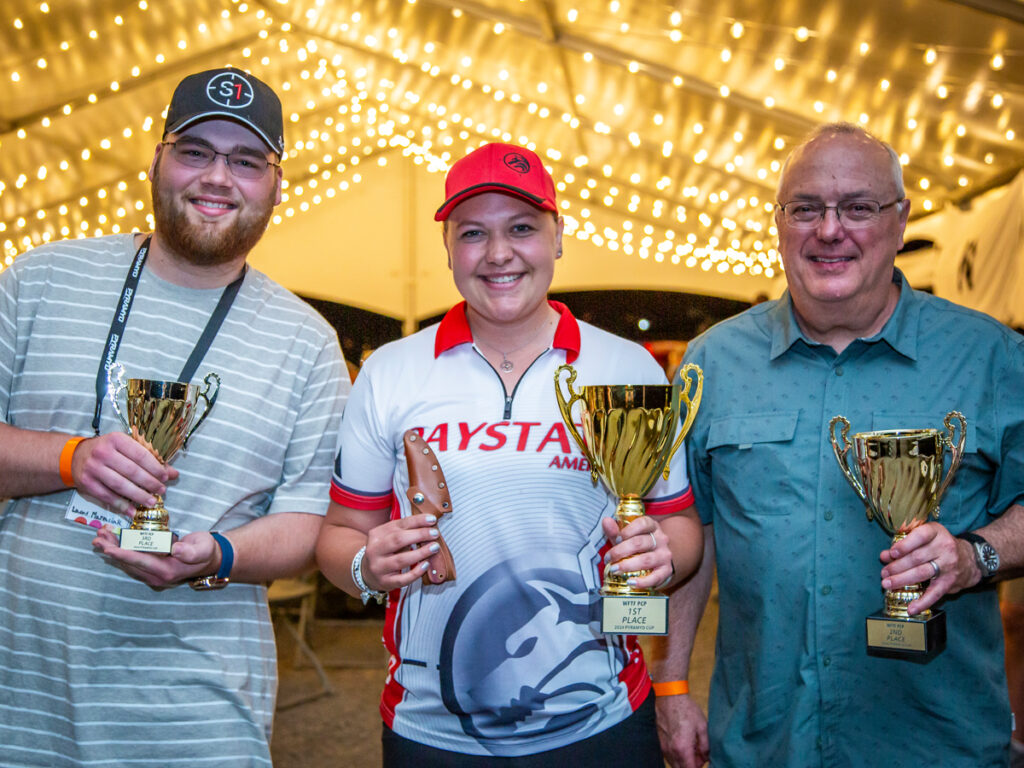
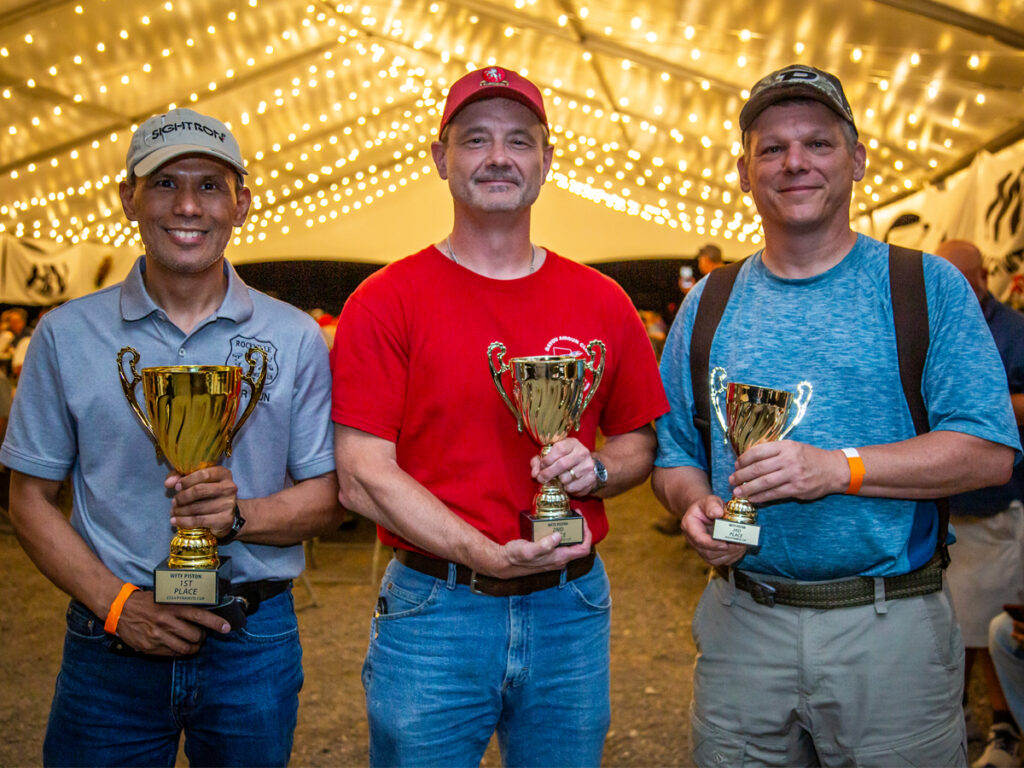
Full FT results can be seen HERE
And Equipment can be found under the Field Target tab, HERE
Thank You
2024 marked 10 years since our first Pyramyd AIR Cup, in 2014. And it’s astonishing to me how much the event has grown in that time. What started with 50-60 shooters, and a small team of employees and sponsors has grown into over 200 registered shooters, dozens of sponsors and a small army of employees. We would not be able to do this without the continued support of the airgun community, so I want to thank each and every person that has made it out to a Cup over the years. Whether 2024 was your 1st Cup or you’ve been to them all, your willingness to come spend your hard earned money and your valuable time with us, means the world to me and all of us here at Pyramyd AIR. And while our company continues to grow, and branch into other parts of the outdoors and shooting industries, trust me when I say that airguns remain our focus. And with that in mind, I look forward to seeing you all at the 2025 Pyramyd Cup.
